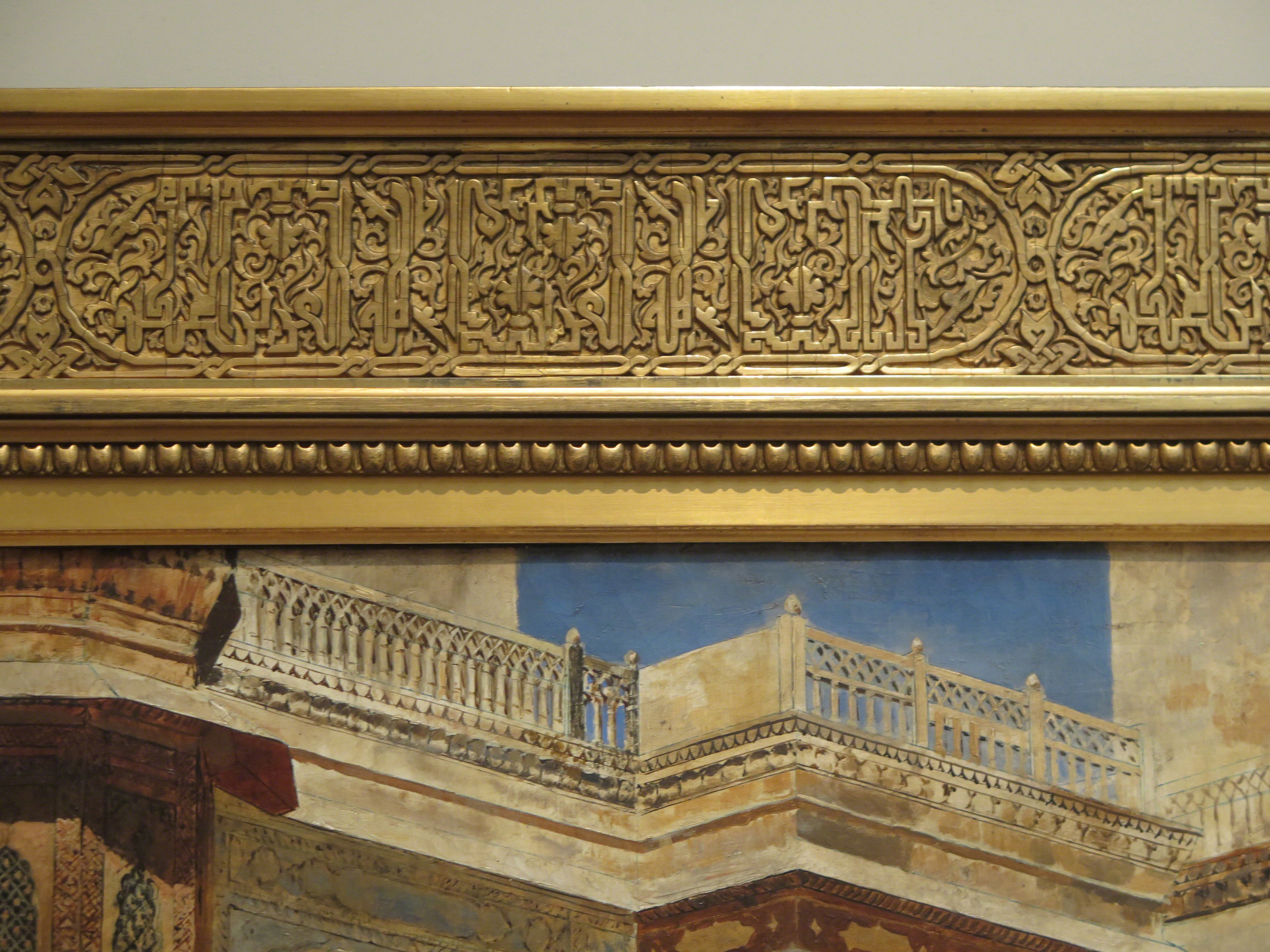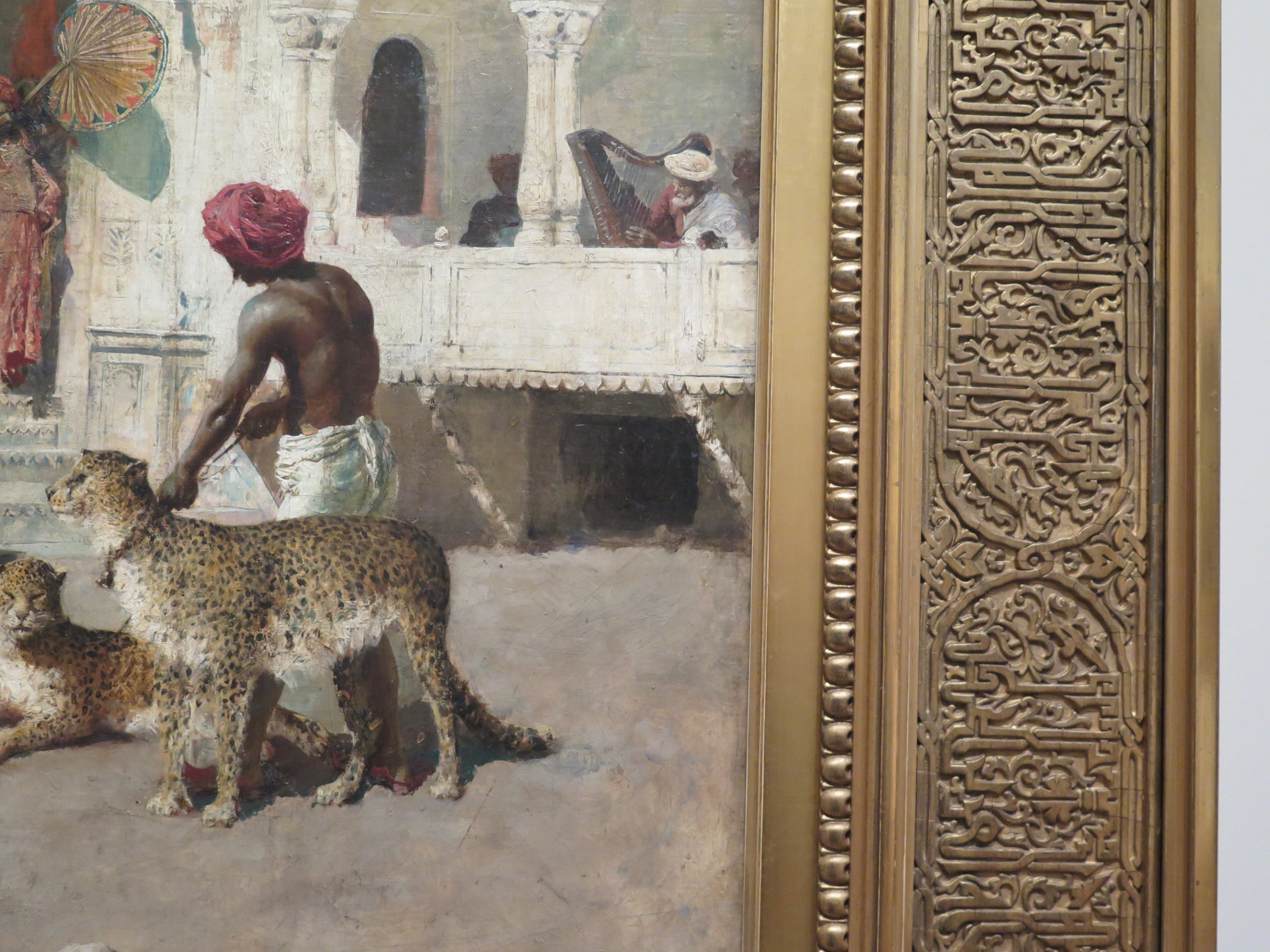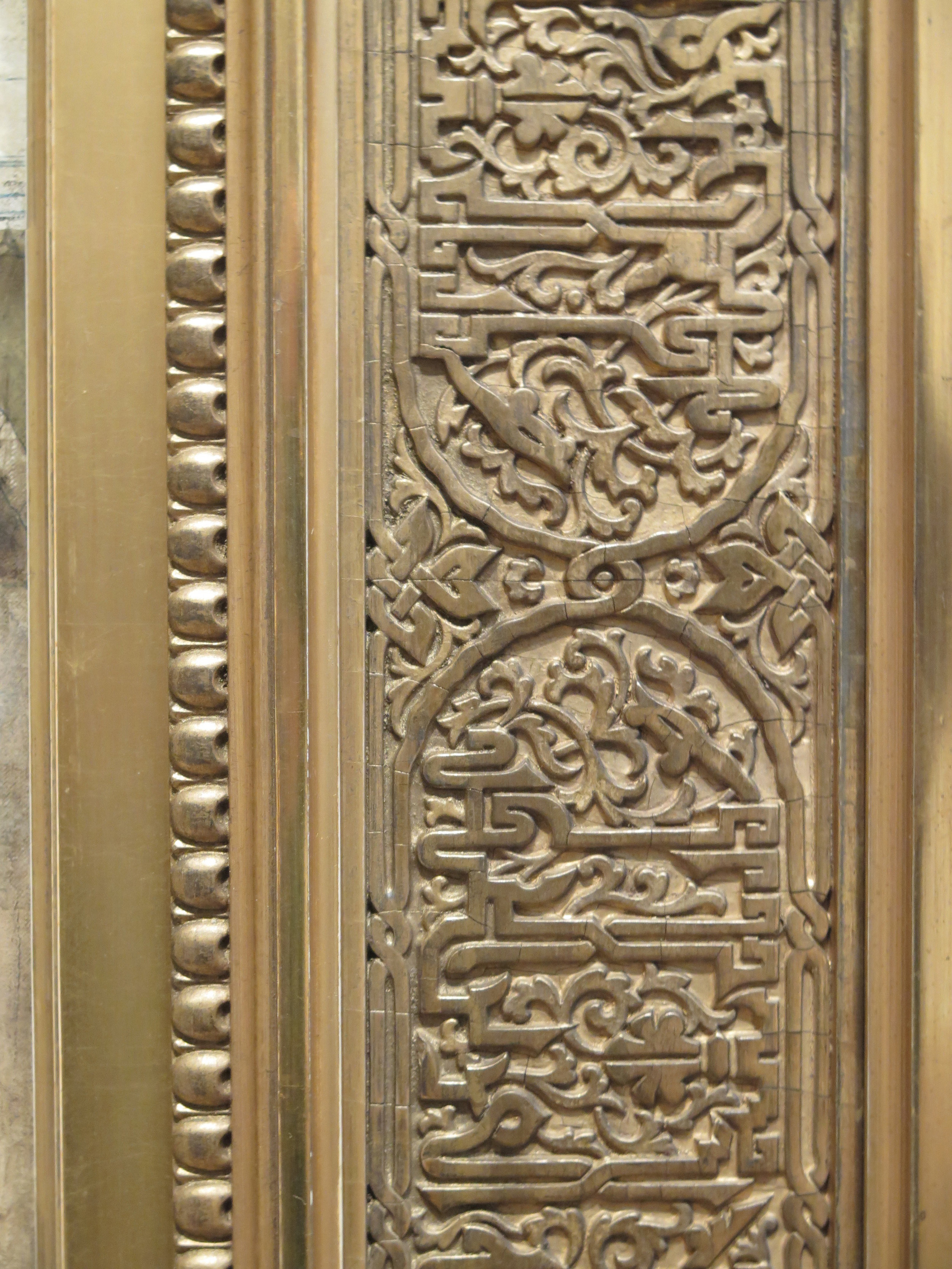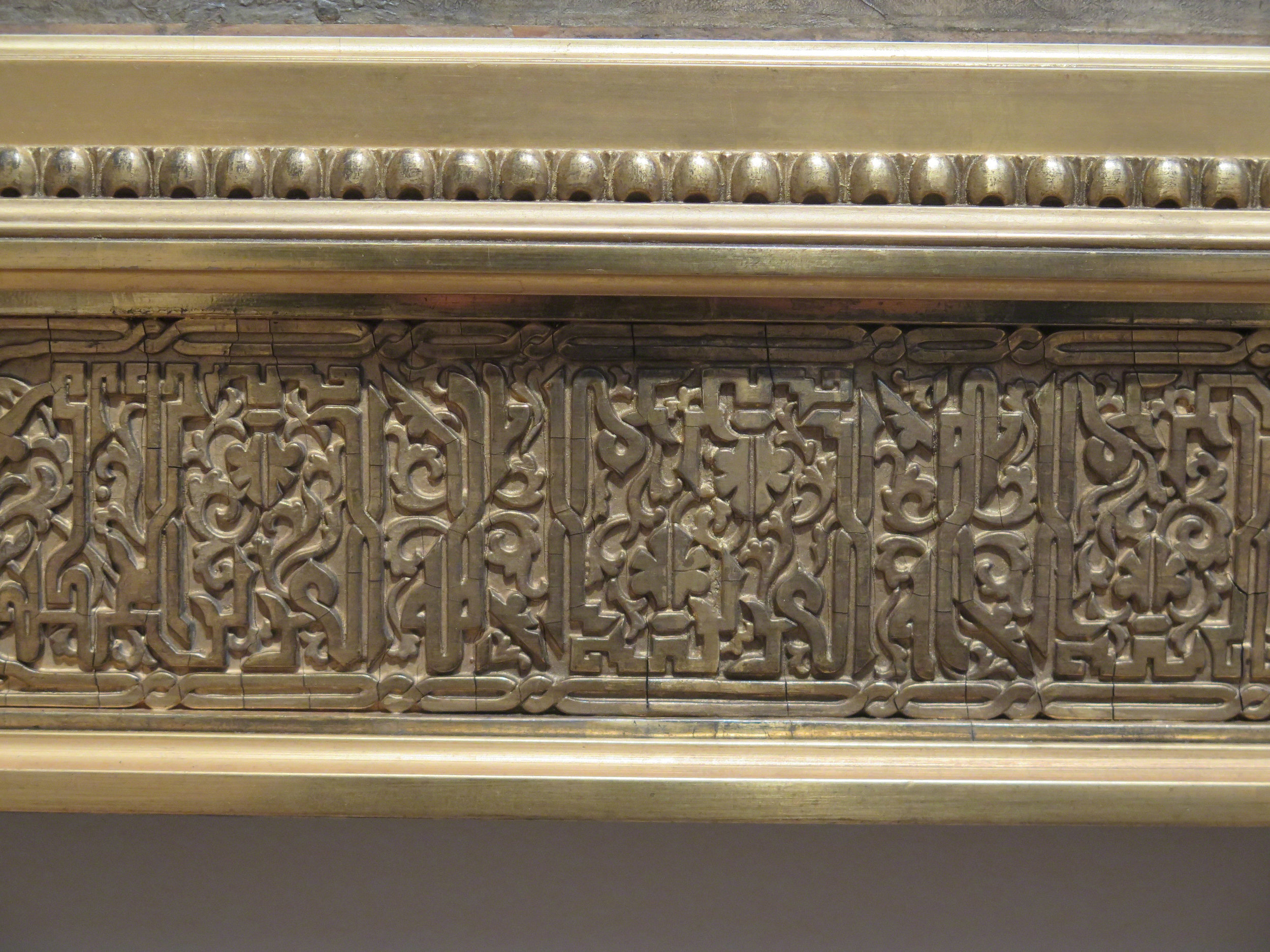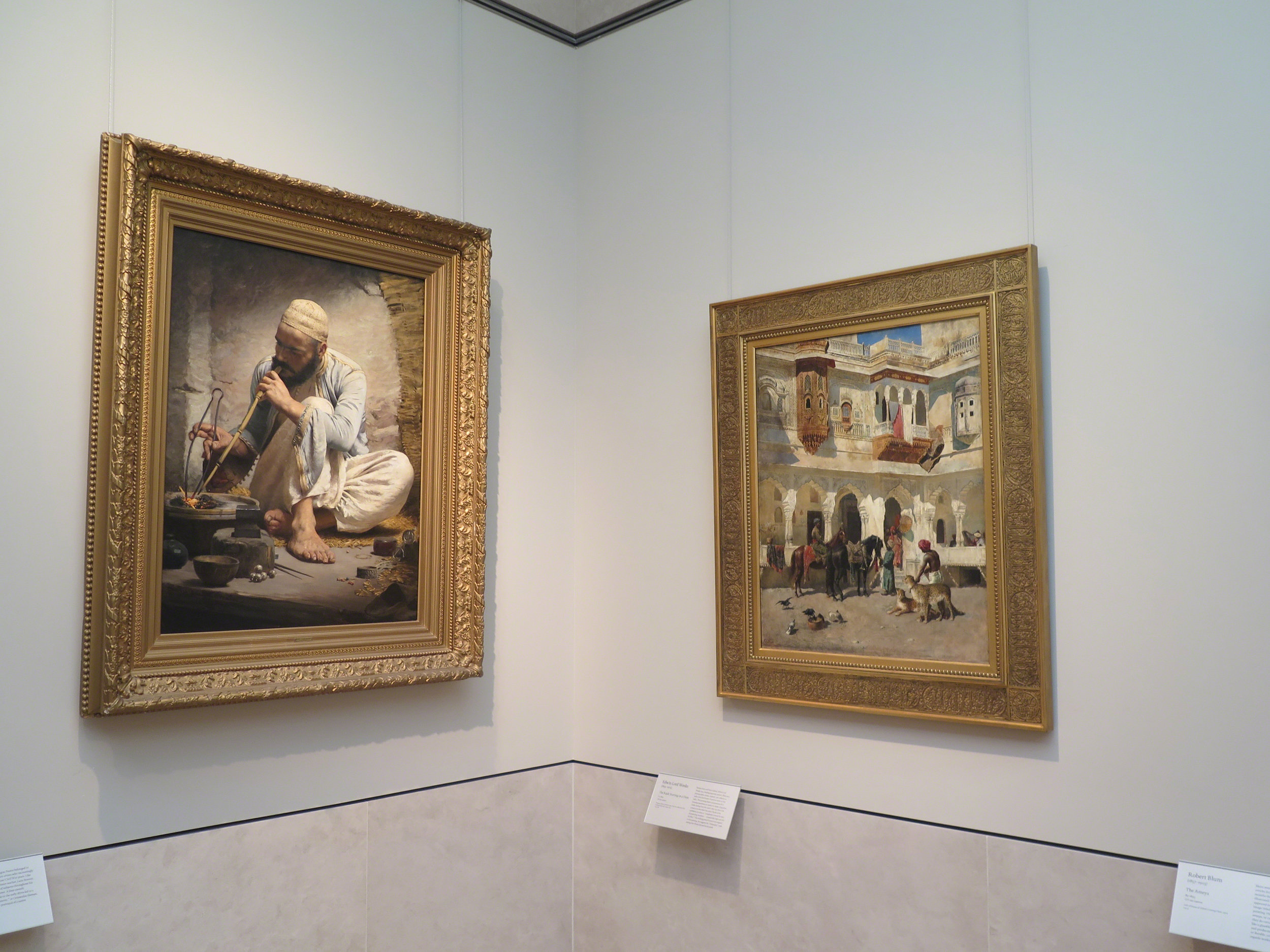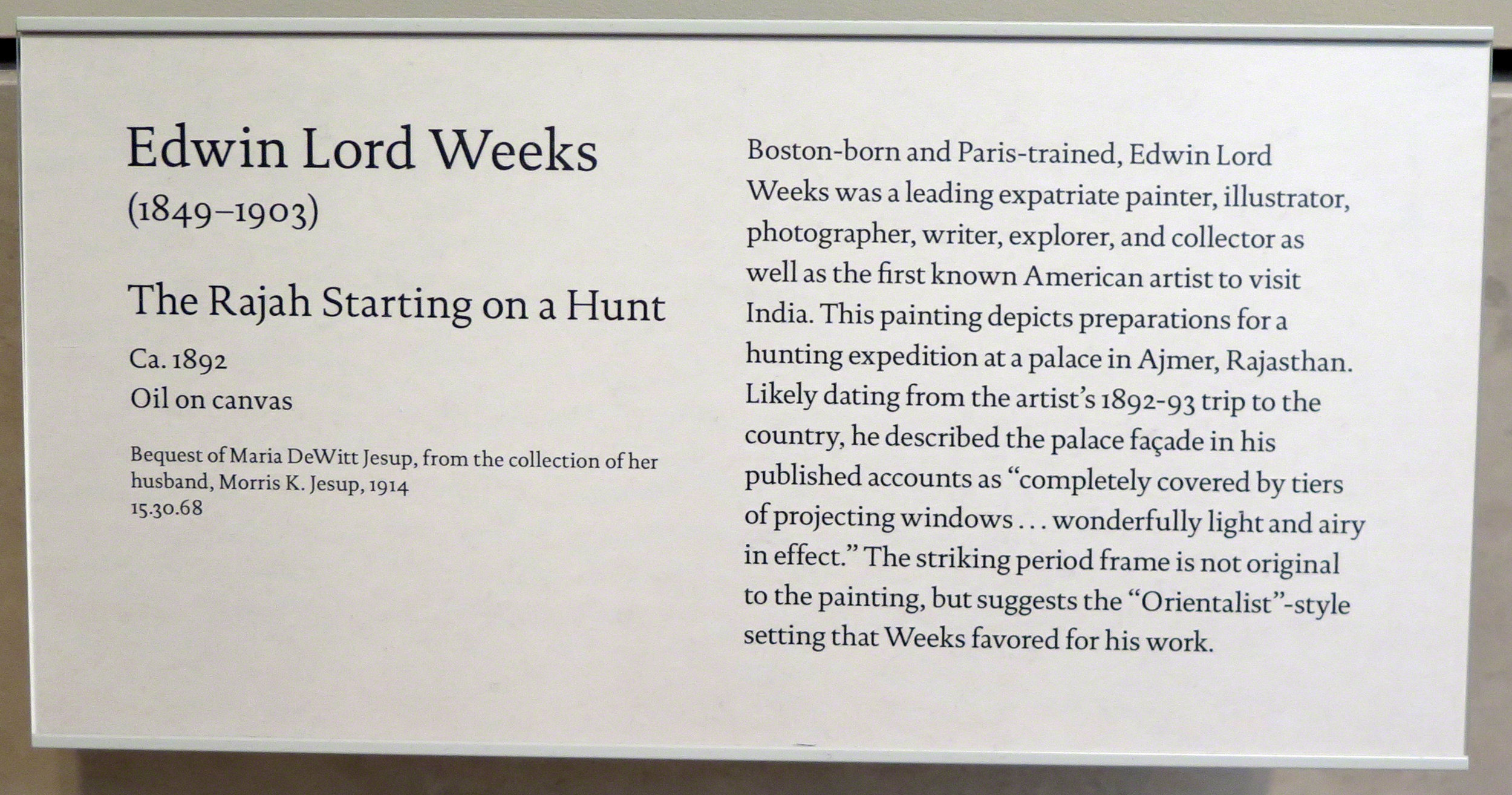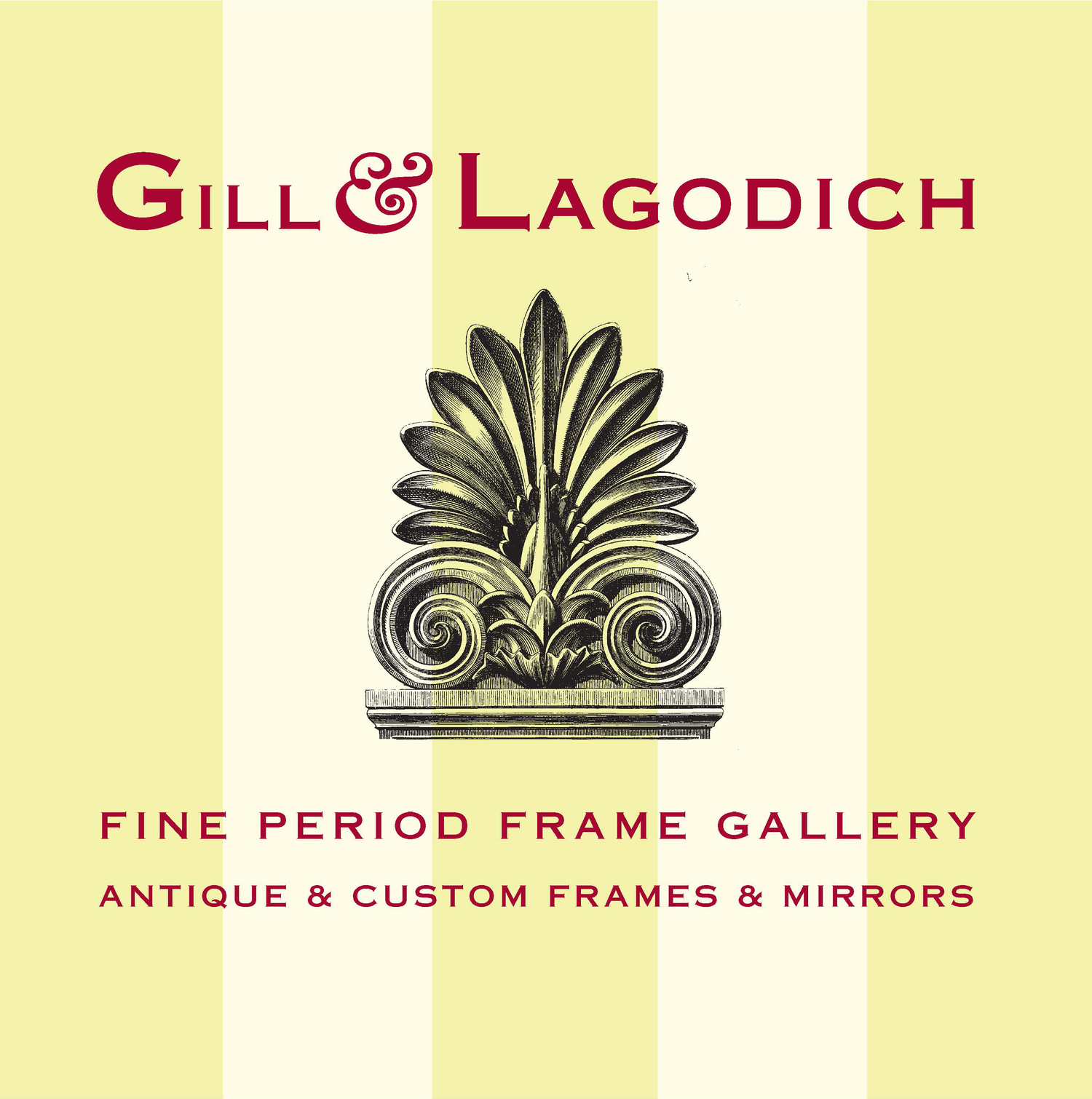METROPOLITAN MUSEUM OF ART, NEW YORK
As of May 2025 Gill & Lagodich has worked on 44 frames for The Met, provided period and replica frames, or restoration of museum frames.
Selected Gill & Lagodich framing projects at the Metropolitan Museum of Art include provision of period frames for Jacques Guillaume Lucien Amans, Bélizaire and the Frey Children, 1837; Grafton Tyler Brown, Snoqualmie Falls, 1886; Charles DeWolf Brownell, Sky—Northern Cuba, ca. 1853–66; Mary Cassatt, Girl in Red Hat with Dog, 1882-83; Samuel Colman, View of Venice, ca. 1875; Robert S. Duncanson, Lake Superior, 1862; George Henry Durrie, Red School House (Country Scene), 1858; Leon Frederic, The Three Sisters, 1896 (private collection); William A. Harper, The Trees, Early Afternoon, France, 1905; Marsden Hartley, Mt. Katahdin (Maine), Autumn No. 2, 1939-40 and Portrait of Albert Pinkham Ryder, 1938; Childe Hassam, Peach Blossoms—Villiers-Le-Bel, 1887–89; Laura Coombs Hills, English Primroses, 1947; Edward Hopper,Office In A Small City, 1953; Joshua Johnson, Emma Van Name, ca. 1805; Horace Pippin, Self Portrait II, 1944, Charles Ethan Porter, Bouquet of Roses,ca. 1880s; Charles Ethan Porter, Cherries,ca. 1885; Charles Ethan Porter, Cracked Watermelon, 1890; Joshua Shaw, Stormy Landscape, 1818; Edith Mitchill Prellwitz, The Elevated, 1889-94; John Sloan,Gray and Brass, 1907; Henry Ossawa Tanner, Untitled (Flight into Egypt), ca. 1923; Edmund Charles Tarbell, Still Life: Vase of Peonies, ca. 1925; Charles Caleb Ward, Coming Events Cast Their Shadows Before, 1871; Everett L. Warner, New York from a Seaplane, ca. 1919; Julian Alden Weir, The Red Bridge, 1895; and Edwin Lord Weeks, The Rajah Starting on a Hunt, 1895; Marguerite Zorach, The Circus, 1929.
Gilding conservation and restoration of museum-owned frames: original to painting by Childe Hassam, The Church at Gloucester, 1918; original to Grandma Moses, Belvedere, 1943; 19th-c. French frame for Jean Victor Bertin, Classical Landscape with Figures, 1803.
Custom replication of original period frames from G&L Collection for Frank Benson, Children in Woods, 1905; Ernest Blumenschein, Taos Valley, New Mexico, 1933; Charles DeWolf Brownell, Ingo, San Martin, Cuba, ca. 1853–66; Gustave Caillebotte, Chrysanthemums in the Garden at Petit-Gennevilliers, 1893; John Steuart Curry, John Brown, 1939; Edward Hopper, Tables for Ladies, 1930: Luigi Lucioni, Portrait of Jared French, 1930; Master of the Canesso Peddler, A Book Peddler, ca. 1670-90; Charles Sheeler, Americana, 1931; Edmund Tarbell, Across The Room, 1899; Johann Heinrich Wilhelm Tischbein, The Children of Martin Anton Heckscher: Johann Gustav Wilhelm Moritz (1797–1865), Carl Martin Adolph (1796–1850), and Leopold (born 1792), 1805; Franz Xaver Winterhalter, Florinda, 1853; and Bumpei Usui, The Furniture Factory, 1925.
Custom replication from small archival photograph of a lost-original c. 1905 hand-carved and gilded frame for Arthur Mathews painting, Afternoon Among The Cypress — frame recreated from a photograph of the painting in its original frame found in Arthur Mathews’s Furniture Shop period scrapbook archived at Oakland Museum of California.
note: framed paintings are shown in alphabetic order by artist. please check back soon for more images.
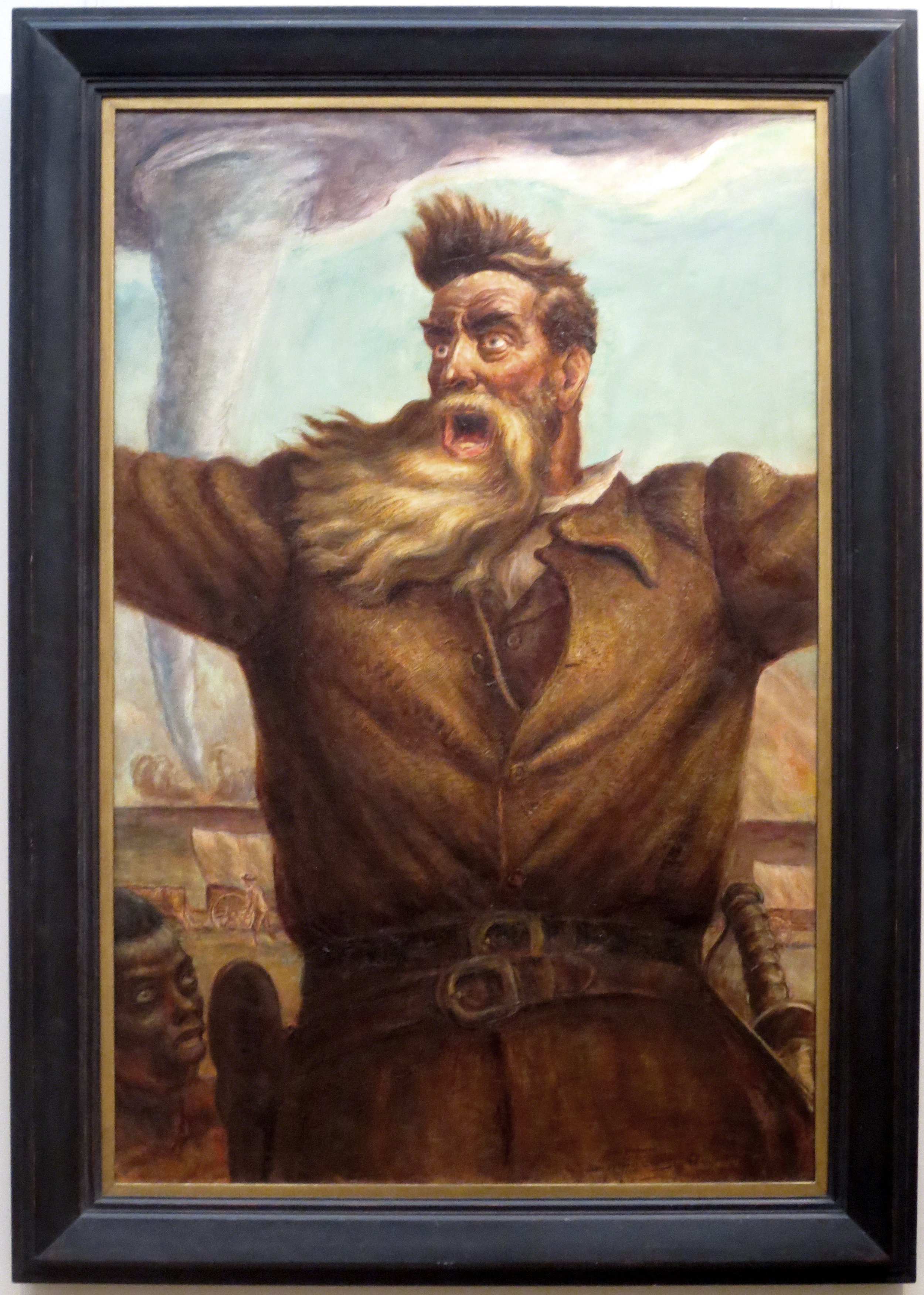
JOHN STEUART CURRY (1897–1946)
John Brown, 1939, oil on canvas, 69" x 45". © John Steuart Curry. Custom-made replica, Early American molding frame, first-quarter-19th-century, beveled wood profile with worn ebonized patina and gilded flat liner. Molding width: 6-1/2” "Throughout the 1930s, Kansas-native Curry was closely associated with Benton as a member of the artistic movement known as Regionalism. John Brown reprises the subject of Curry's mural in the rotunda of the Kansas State Capitol. One of the most controversial figures in nineteenth-century American history, Brown opposed the extension of slavery in the 1850s into the Kansas Territory. Curry depicted Brown larger-than-life in an open, stark landscape besieged by a tornado—a meteorological symbol of the conflict—with a slave at his side. The abolitionist's crazed expression and animated hair and beard suggest the messianic fervor that fueled his opposition to human bondage." Arthur Hoppock Hearn Fund, 1950 (50.94.1) —Metropolitan Museum permanent collection label.
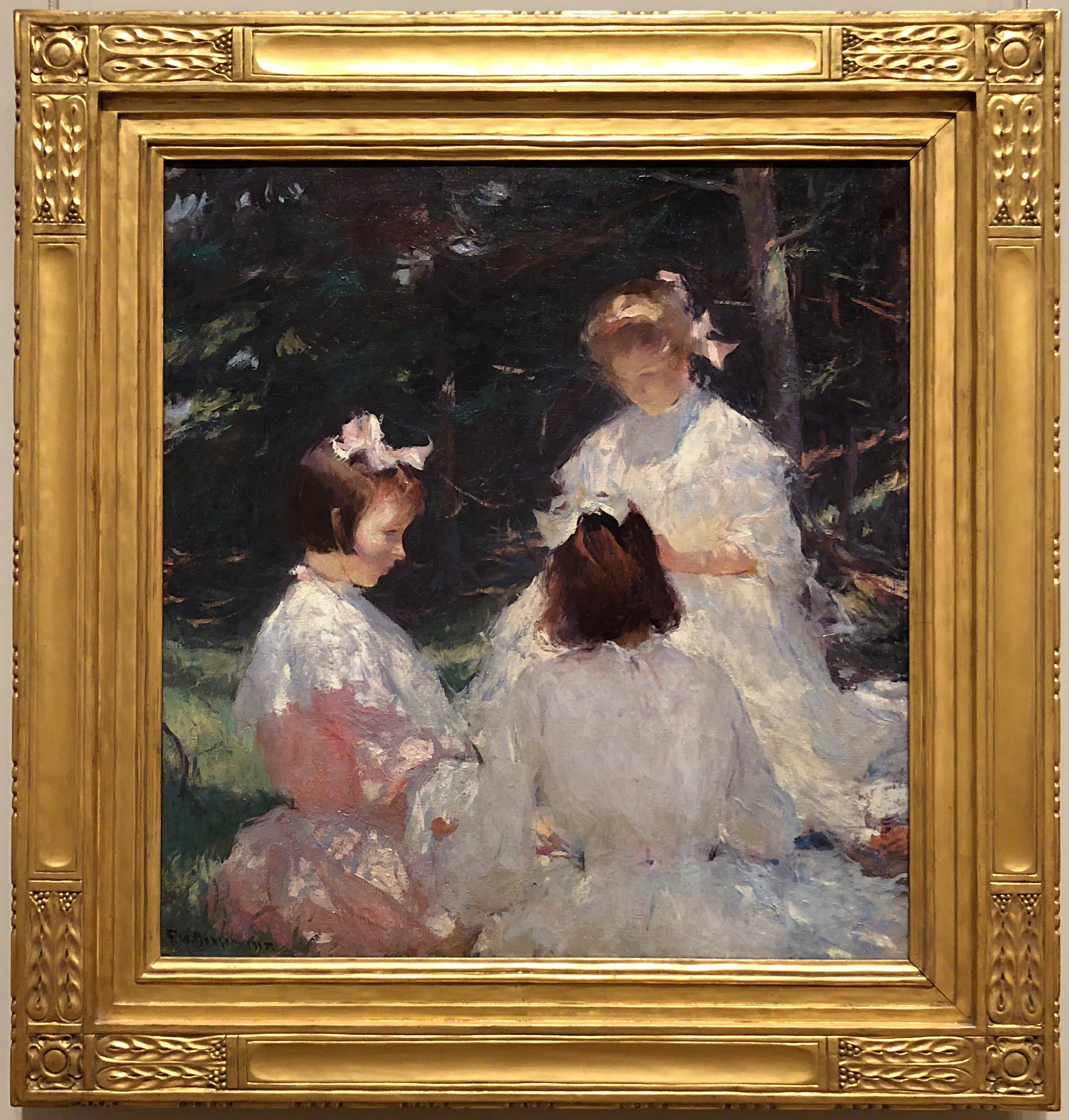
FRANK WESTON BENSON (1862–1951)
Children In Woods, 1905, oil on canvas, 32” x 30”, custom-made replica American Arts and Crafts painting frame, c. 1907, Hermann Dudley Murphy/Carrig Rohane, Boston maker; gilded hand-carved wood. “Benson began to experiment with plein-air painting in the late 1890s, often depicting his own children out of doors. This canvas portrays his three daughters near the family’s summer retreat at North Haven, Maine. Eleanor, the eldest, recalled: “When we were in North Haven, Papa would often have us put on our best white dresses and then ask us to sit in the grass or play in the woods. We thought it was silly and the maids made such a fuss when they saw our clothes afterwards.” Benson permitted his children to read or play cards while posing but disguised these diversions in his final compositions.”
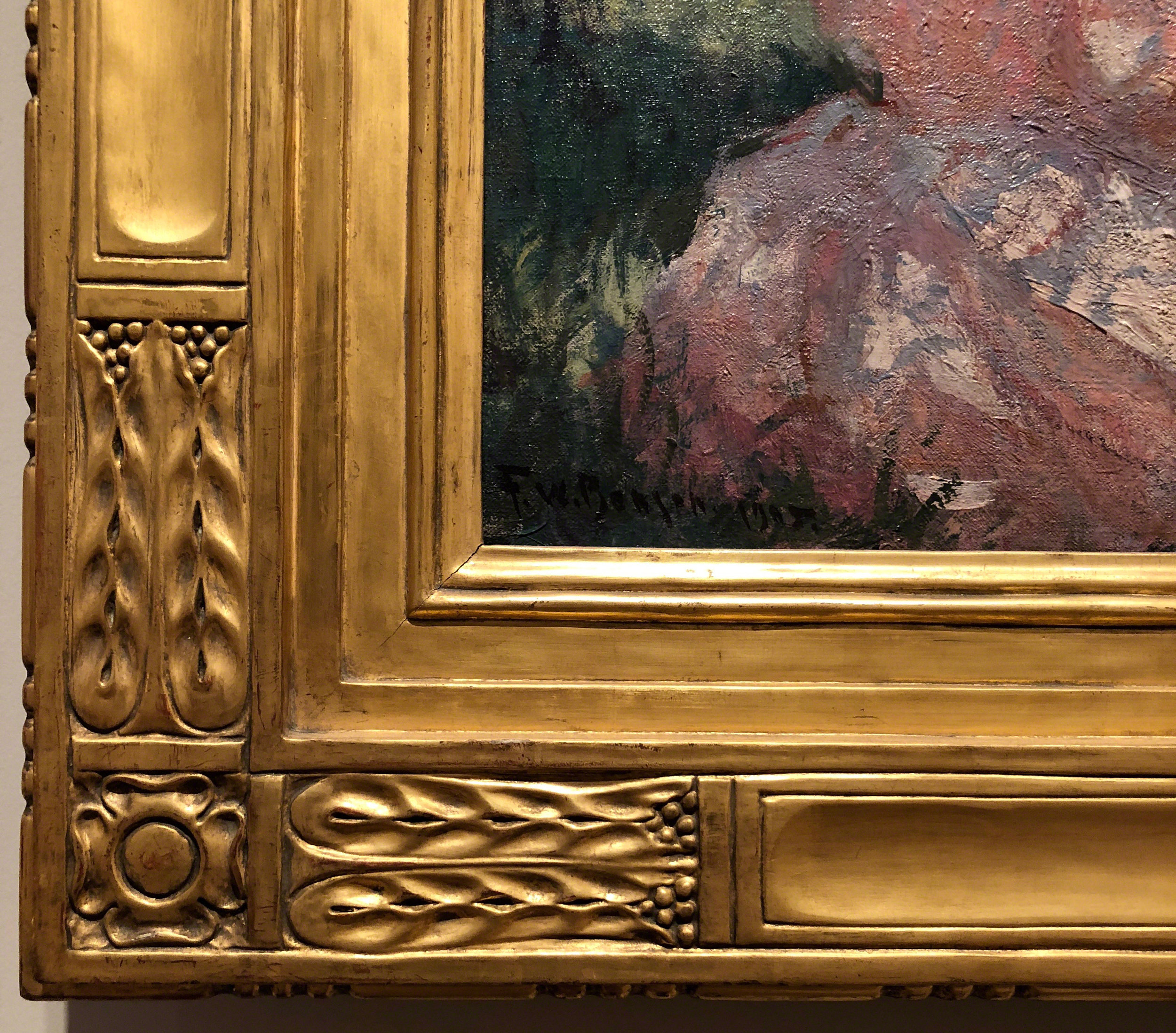
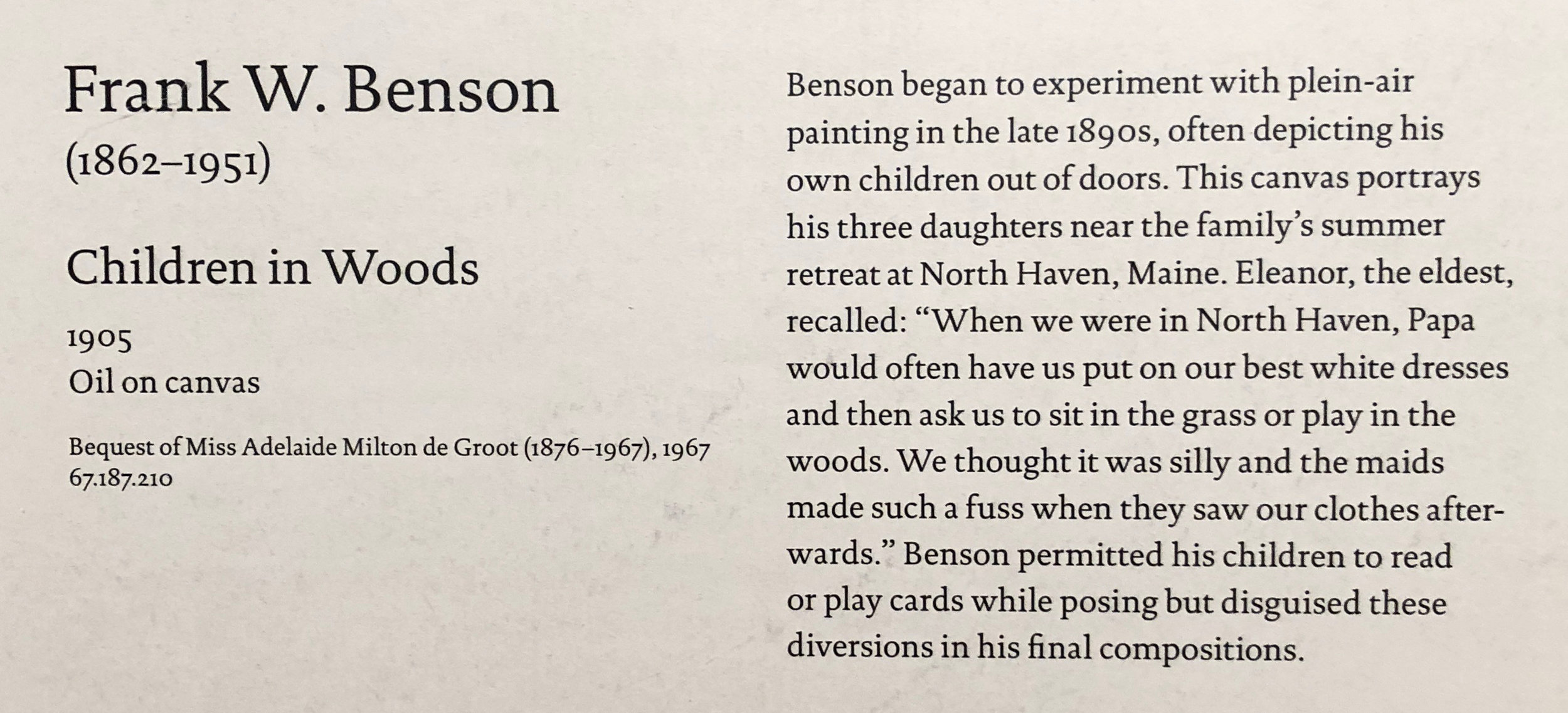
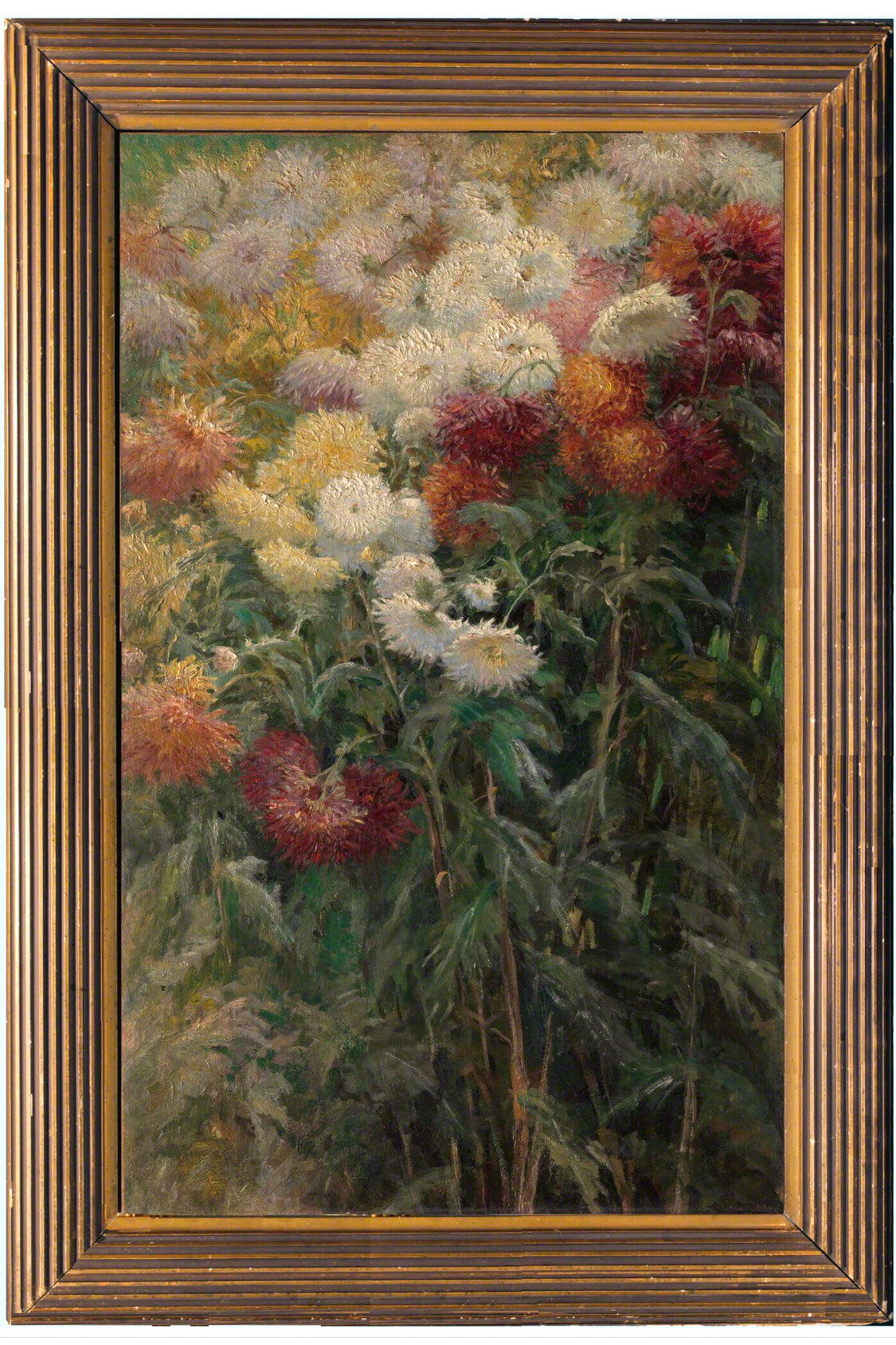
GUSTAVE CAILLEBOTTE (1848–1894)
Chrysanthemums in the Garden at Petit-Gennevilliers, 1893, oil on canvas, 38-5/8” x 23-1/2” Custom-made replica frame, c. 1890s Degas-style painting frame, molding width 3-7/8” Painting Gift of the Honorable John C. Whitehead, 2014.

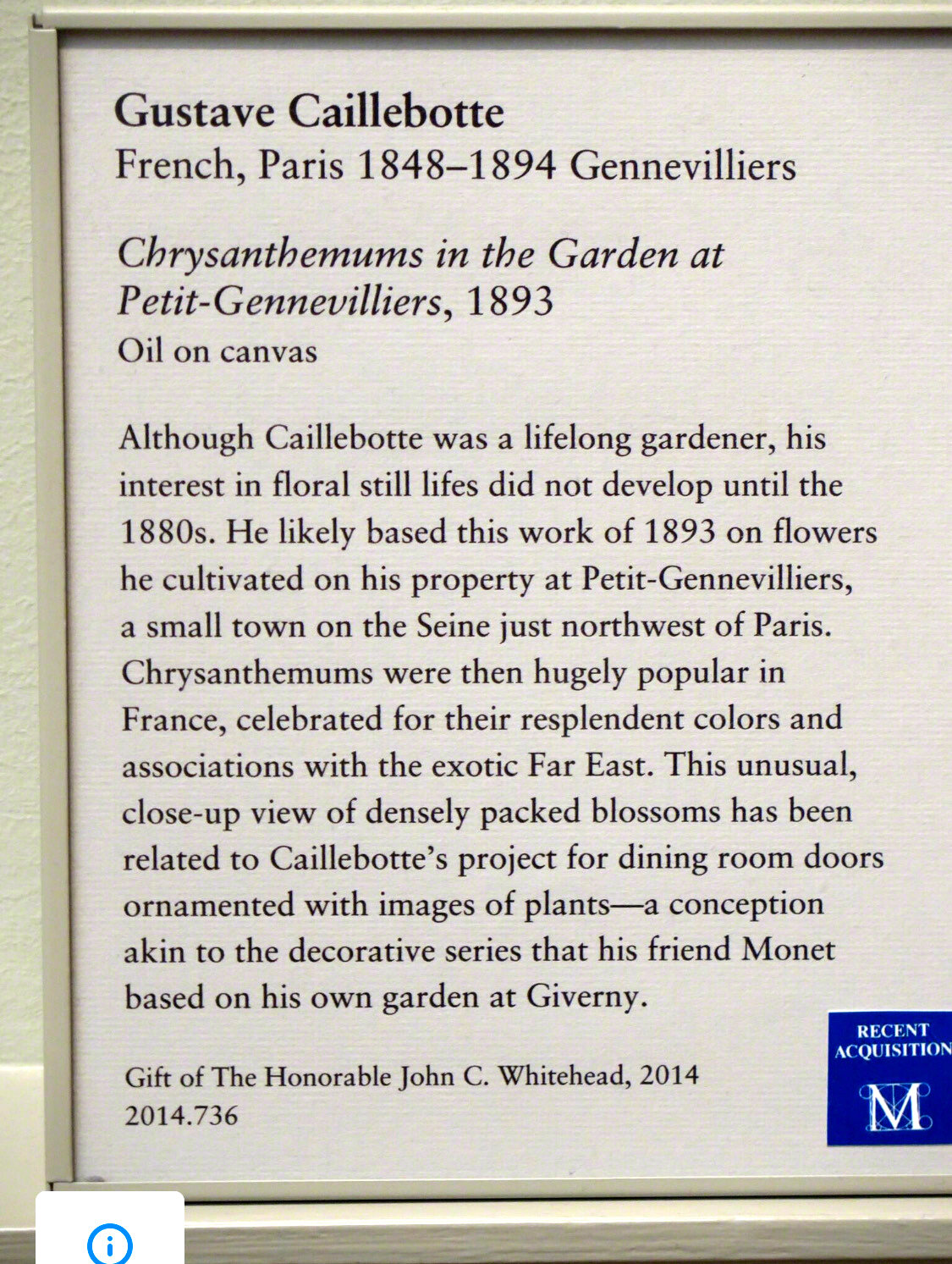
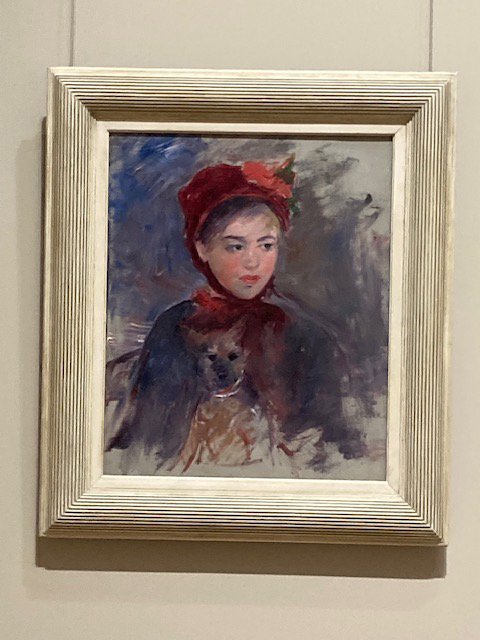
MARY CASSATT (1844–1926)
Girl in Red Hat with Dog, 1882–83, oil on canvas. Period 19th-century Degas painting frame, antiqued gesso finish on wide fluted cushion profile; molding width 4-1/2” Painting Gift of the Estate of Maxine Leff Myers, 2020
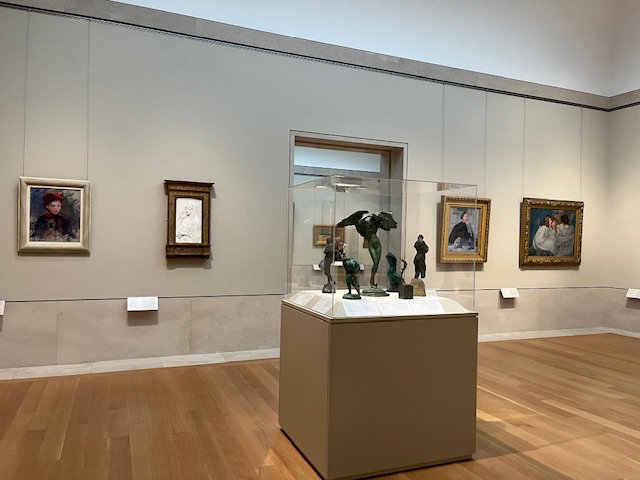
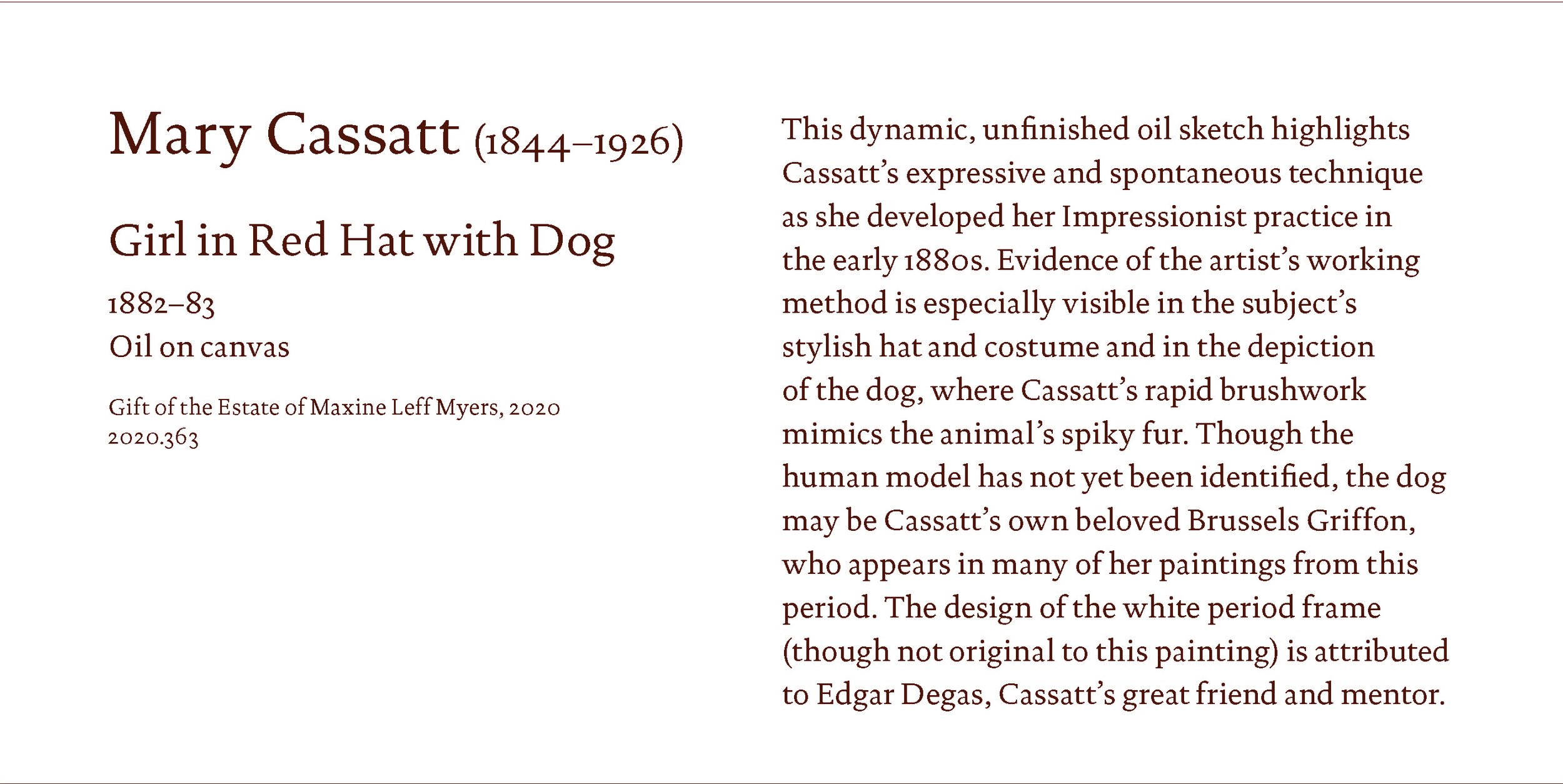
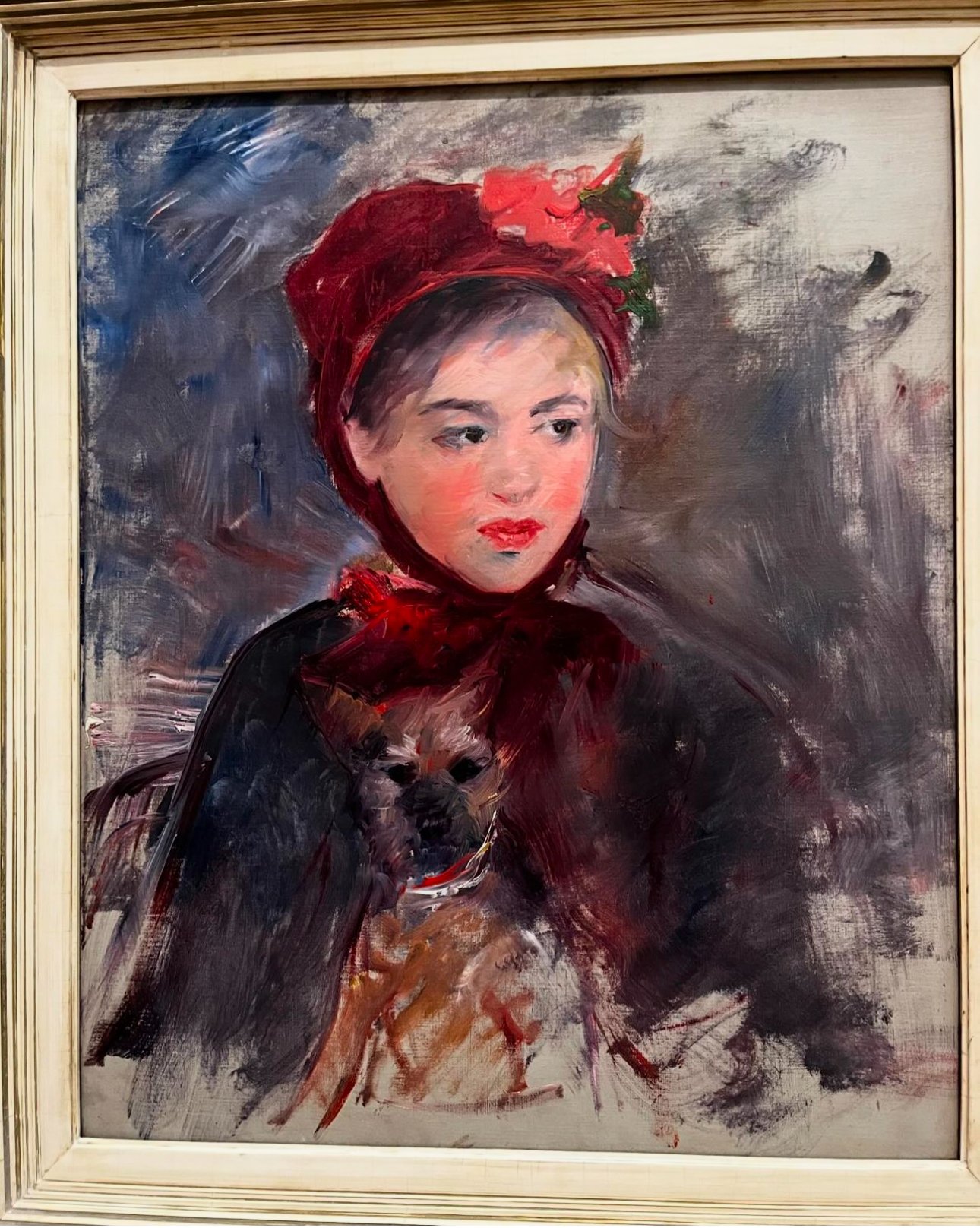
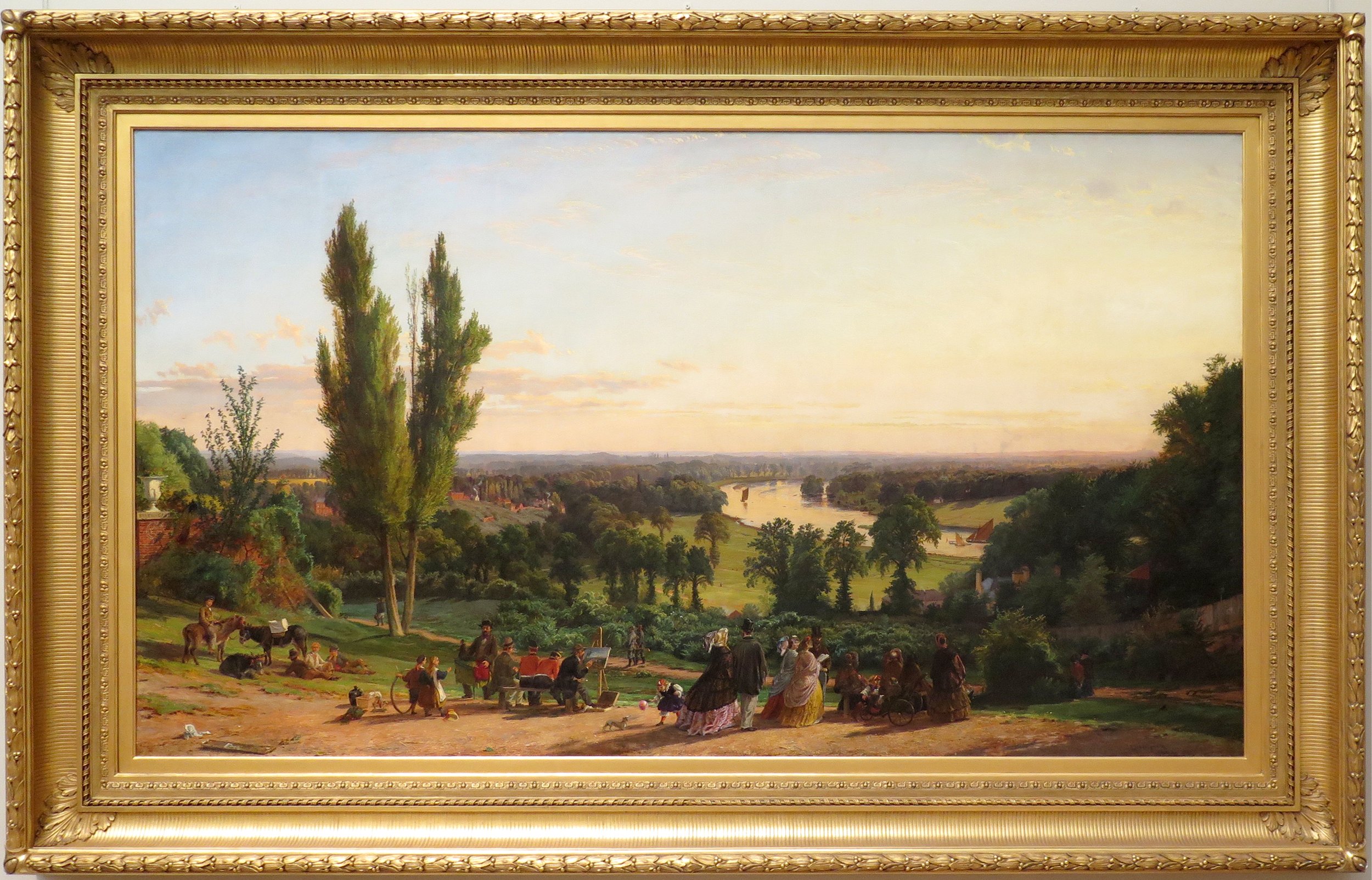
JASPER FRANCIS CROPSEY (1823–1900)
Richmond Hill in the Summer of 1862, 1862–63, oil on canvas, 54-1/4 x 96-3/16 in. Custom-made replica c..1860s American painting frame; gilded applied composition ornament on wood; molding width: 10 inches. “This is one of Cropsey’s most critically acclaimed panoramic landscapes painted in England. The view of the Thames from Richmond Hill, outside of London, was a popular destination for artists and sightseers. The subject had even greater relevance for Cropsey and his viewers in 1862. Richmond, Virginia—the capital of the Confederacy during the American Civil War—derived its name from a view on the James River that reminded its founder of his English youth. In this context and at this time, many critics read Cropsey’s painting as a comment on the sectional conflict then raging as well as a personal plea for reconciliation and unity.” —Met Museum label. Painting: Private Collection, shown here on view at the Metropolitan Museum.
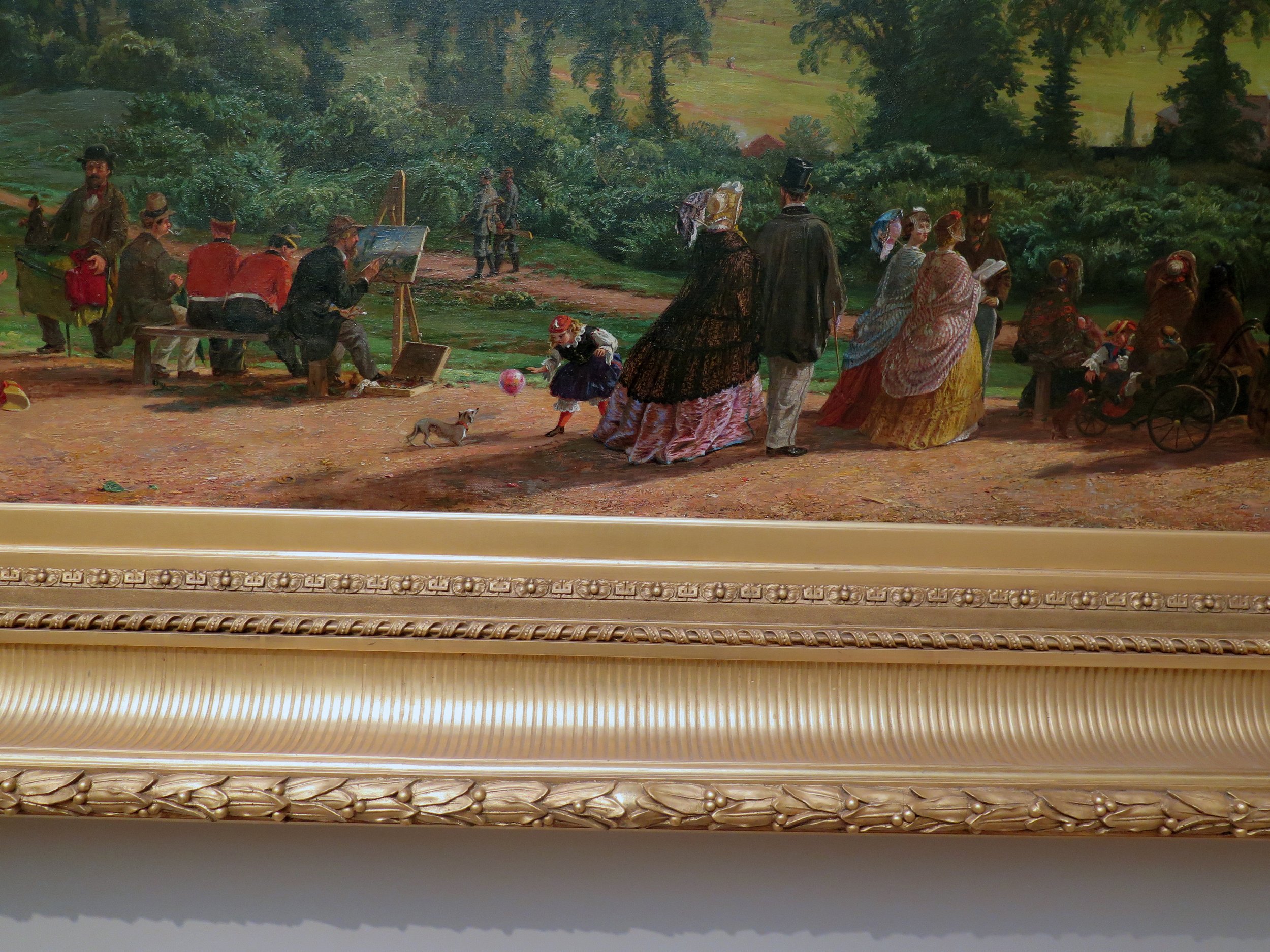
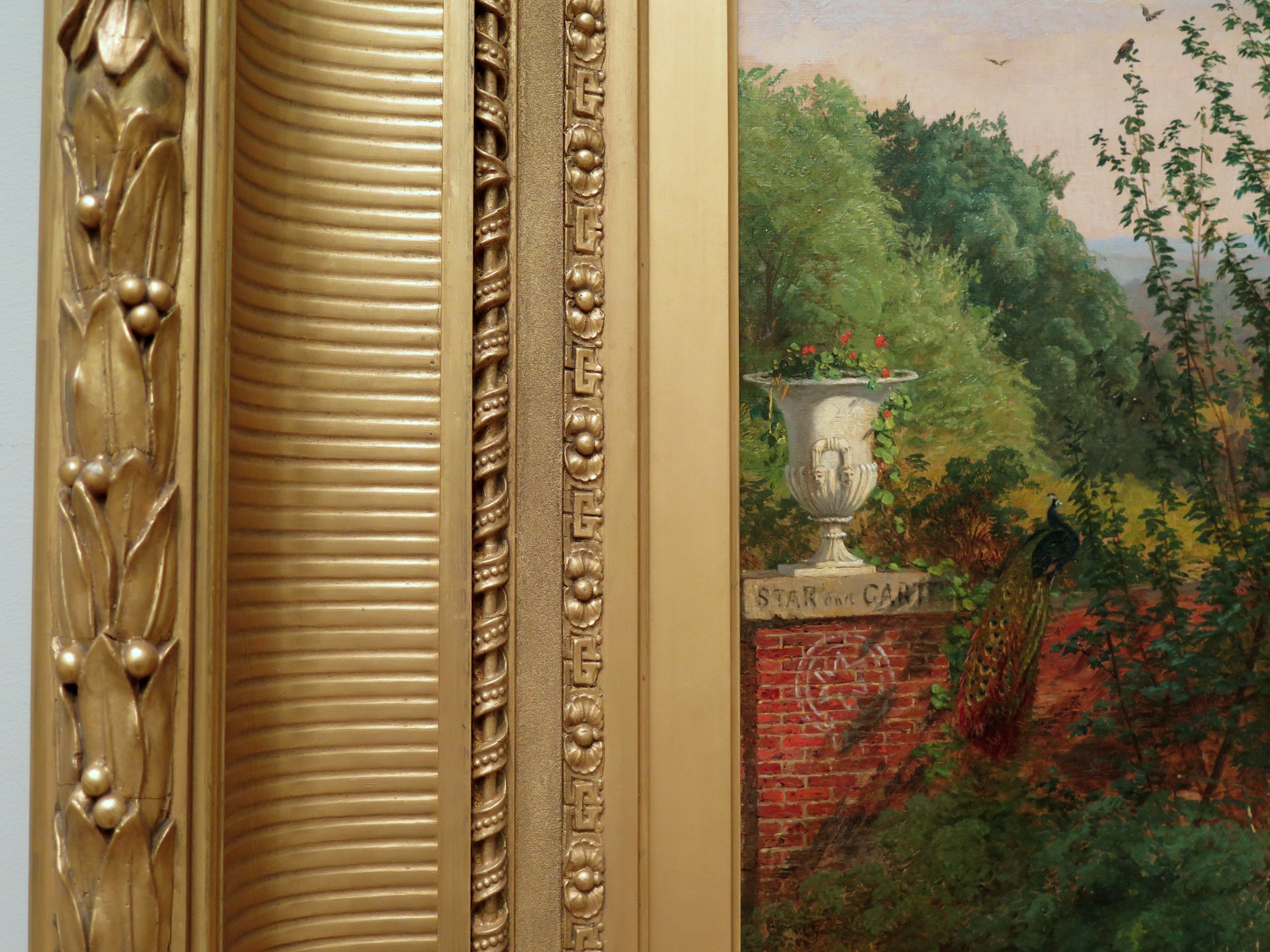
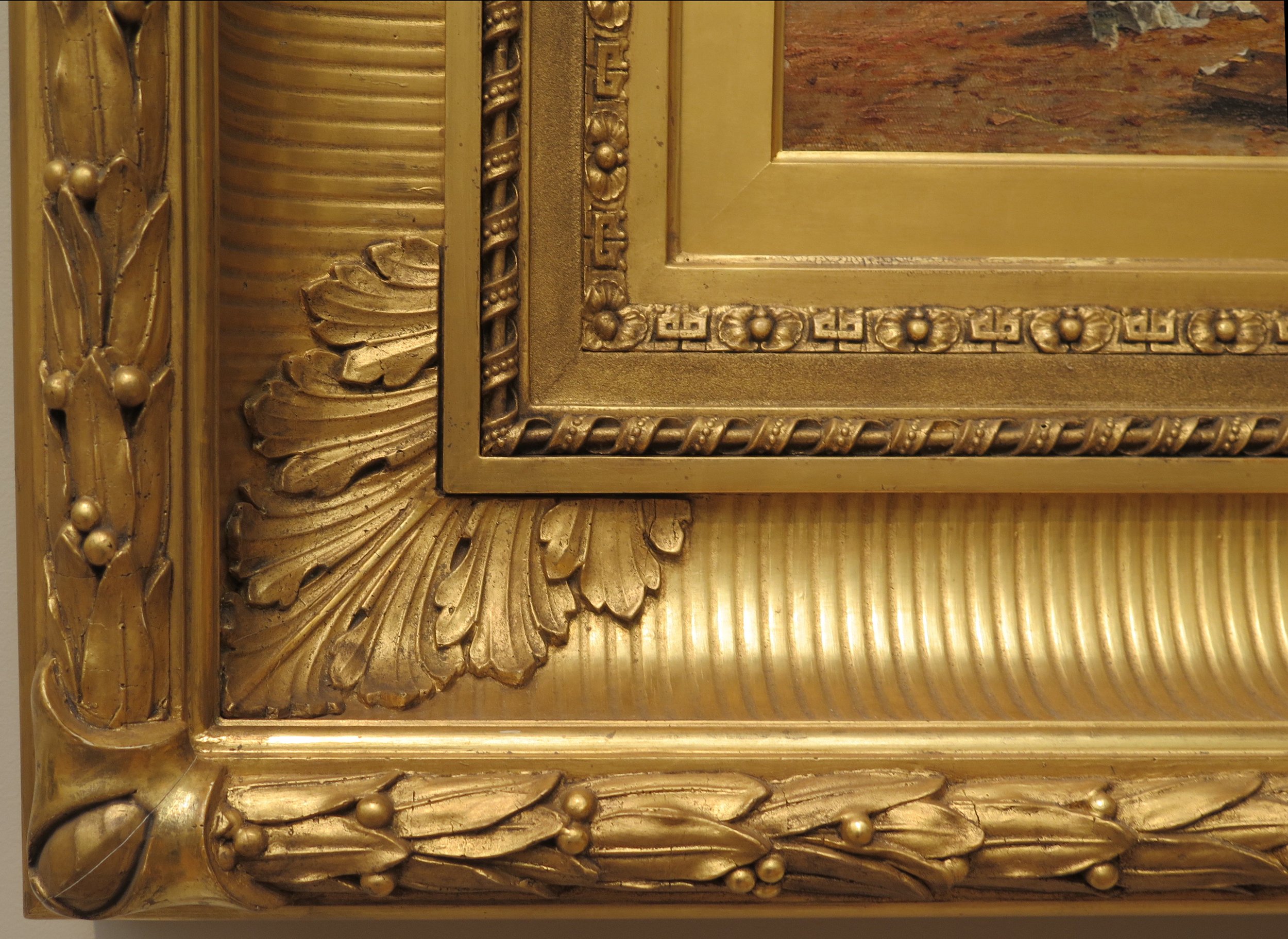
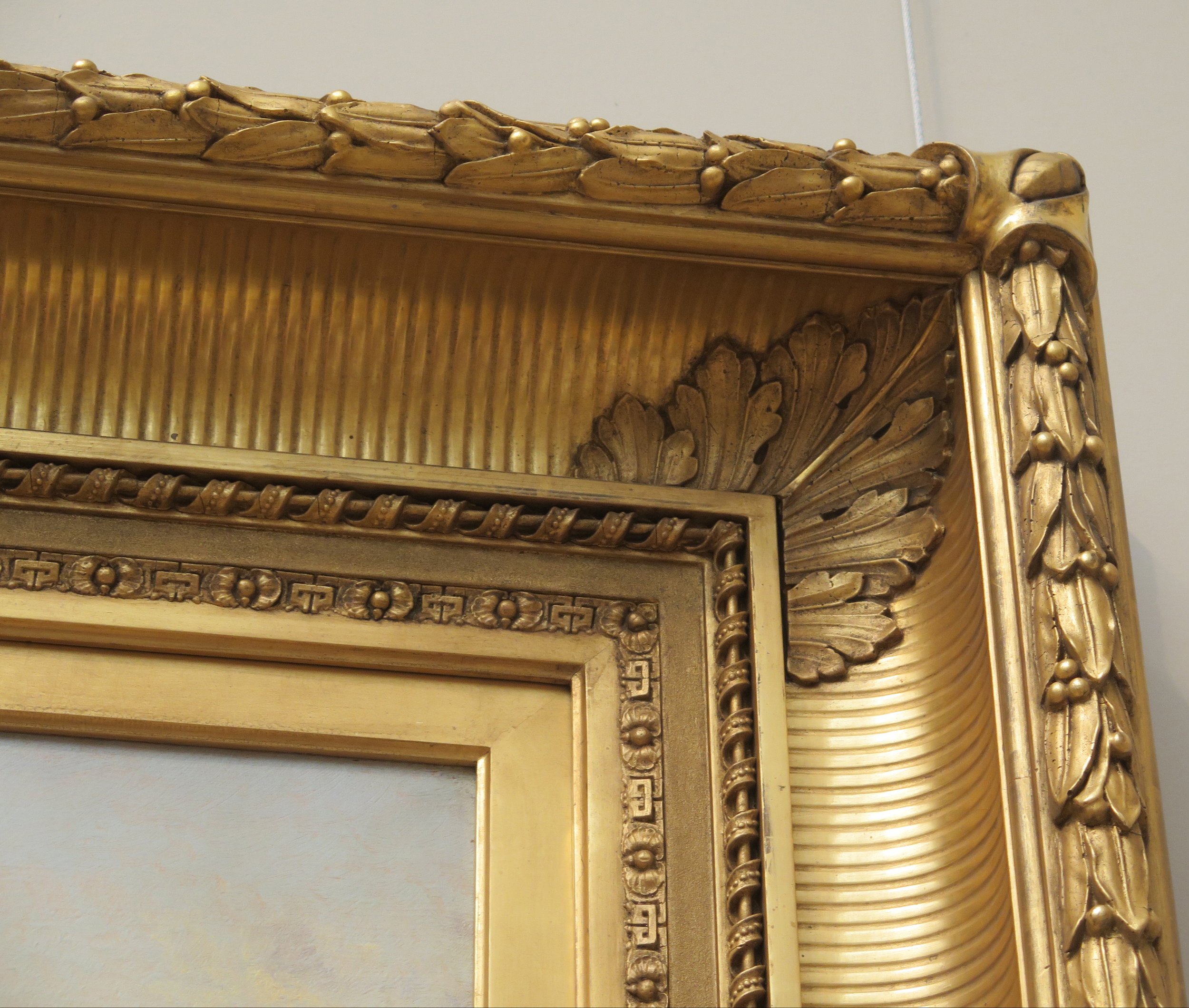
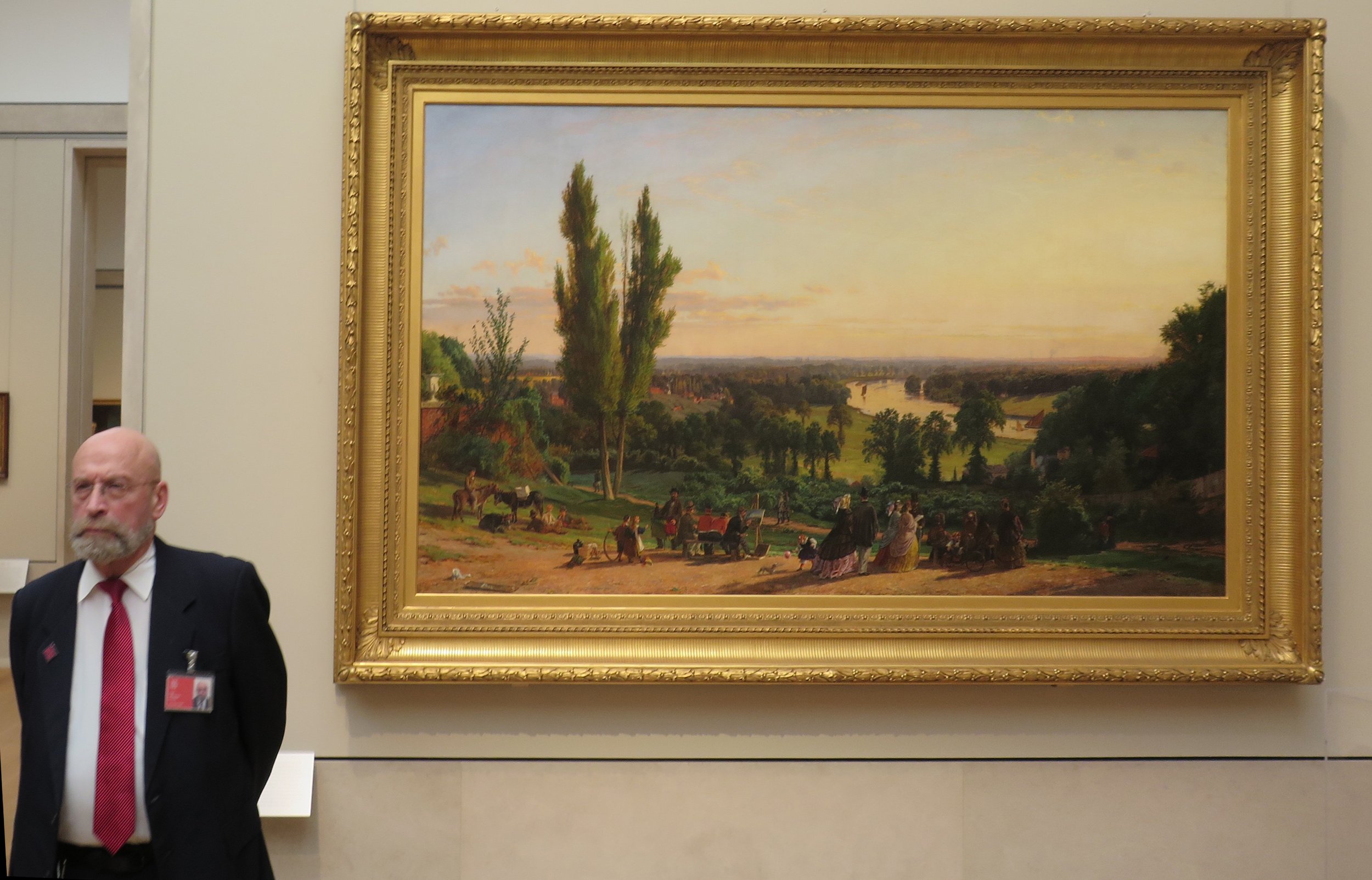

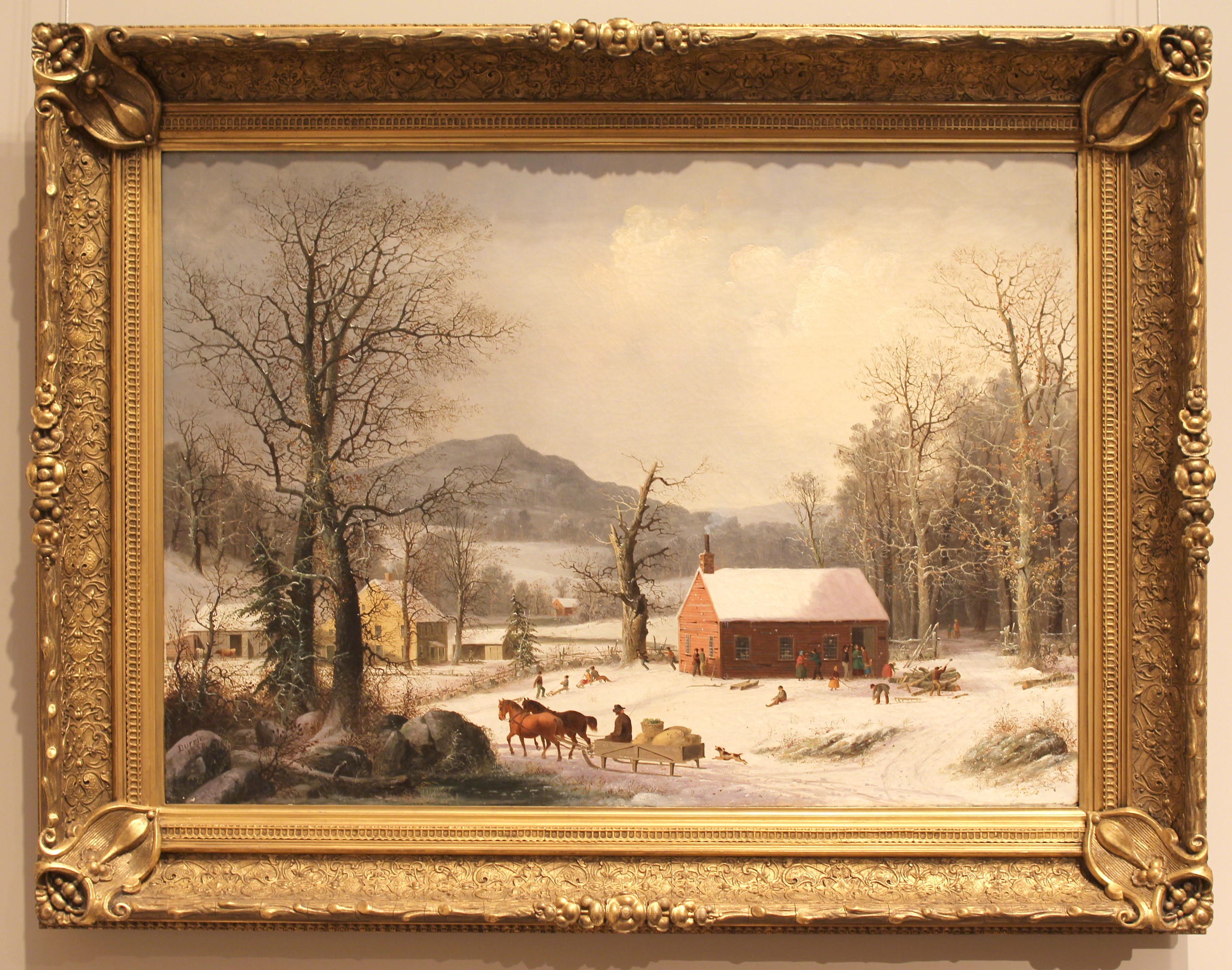
GEORGE HENRY DURRIE (1820 – 1863)
Red Schoolhouse (Country Scene), 1850–60, oil on canvas, 28-1/4" x 41-1/4", c. 1850s American painting frame, gilded applied composition ornament on wood; molding width 5". "Based in New Haven, Connecticut, Durrie traveled throughout the state, painting scenes of rural life. He was noted for his winter landscapes, which idealize the harsh season and effectively capture the visual effects of snow and ice. The New York lithographic firm Currier & Ives chose a number of his scenes for reproduction and distribution. In this nostalgic work, Durrie depicted a one-room schoolhouse with a blanket of unmelted snow on its roof, surrounded by children at play." —Metropolitan Museum of Art, permanent collection label.
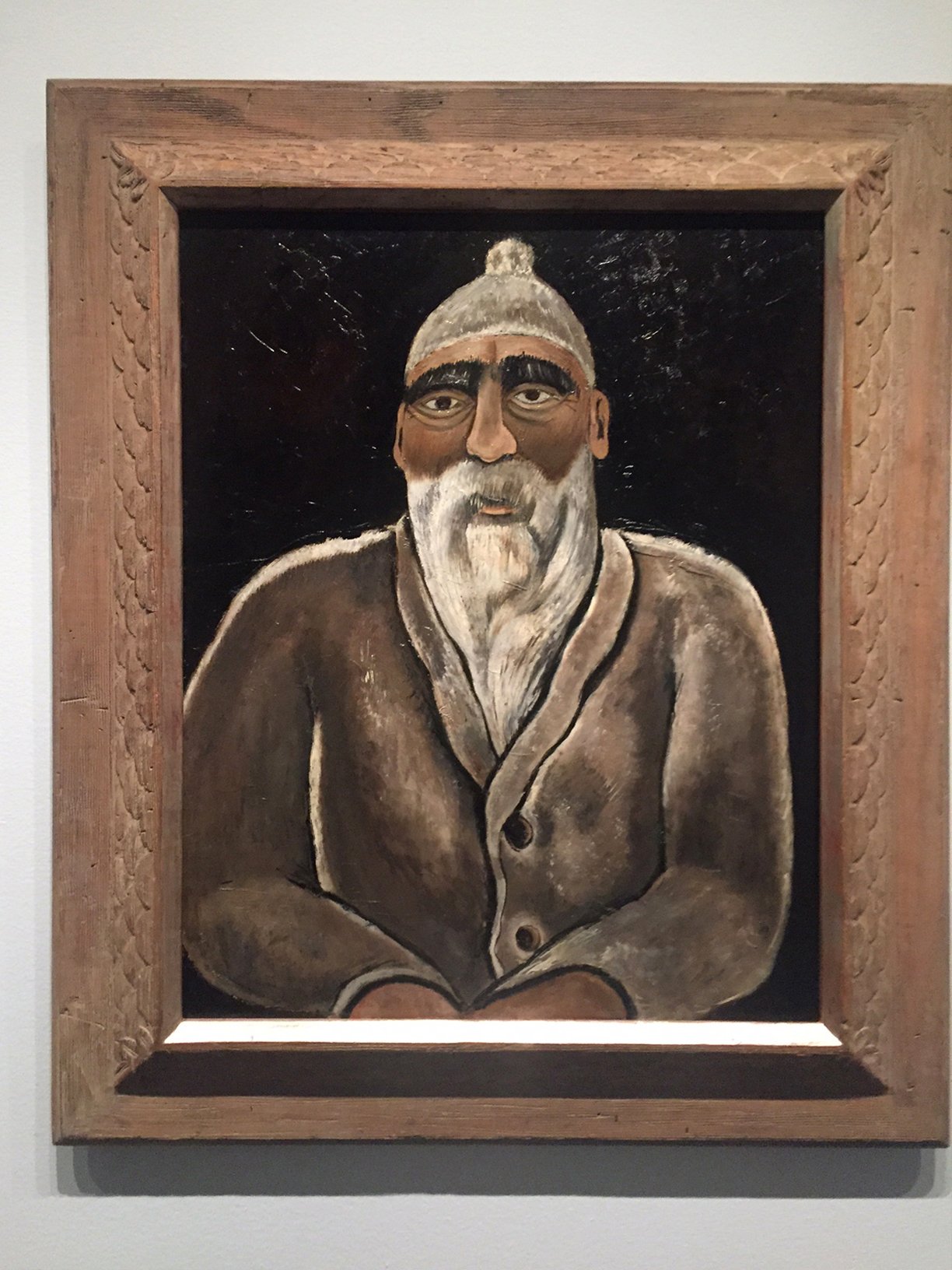
MARSDEN HARTLEY (1877–1973)
Portrait of Albert Pinkham Ryder, 1938, oil on masonite, 28 x 22 in. c. 1930s American Modernist painting frame, House of Heydenryk, New York makers; silver-gilded beveled sight edge, wormy chestnut reverse profile, molding width 4-3/8 in. Previously on view at the Met Breuer in the stellar exhibit “Marsden Hartley’s Maine”, March 15 – June 18, 2017, and at Colby College Museum of Art, July 8 – November 1, 2017. “Having painted a series of dark landscapes inspired by the work of Albert Pinkham Ryder in 1909, Hartley returned to his American artistic hero late in his career. This highly imaginative portrait of Ryder is Hartley’s posthumous tribute to the painter, whose isolated, melancholy existence and financial poverty struck a sympathetic chord in him. In the portrait, Ryder appears frontal and isolated, like a saint or an icon. Hartley also composed a poem and several essays about the artist, including one in which he describes Ryder’s eyebrows as ‘lichens overhanging rocks of granite.’” —Met Museum label
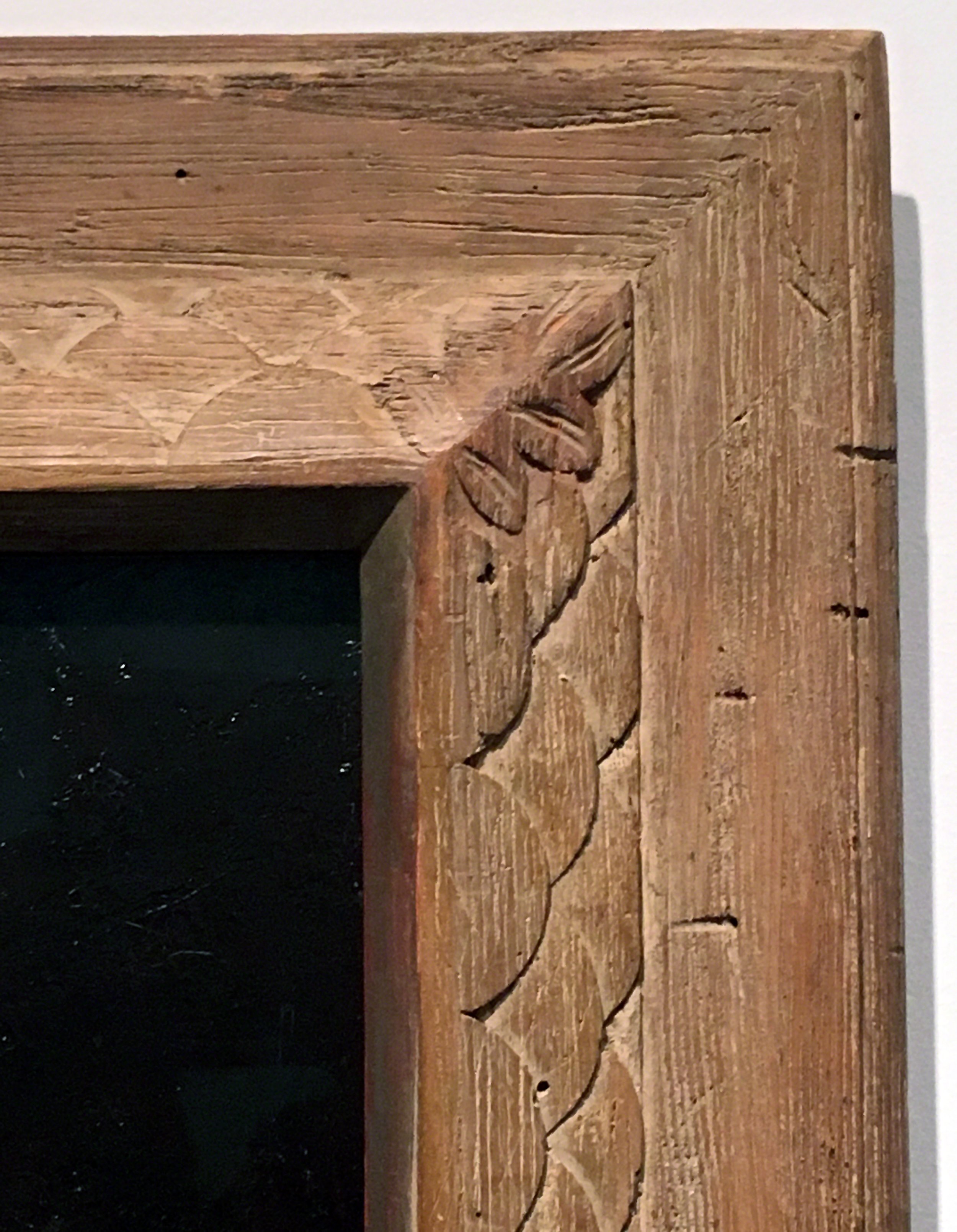


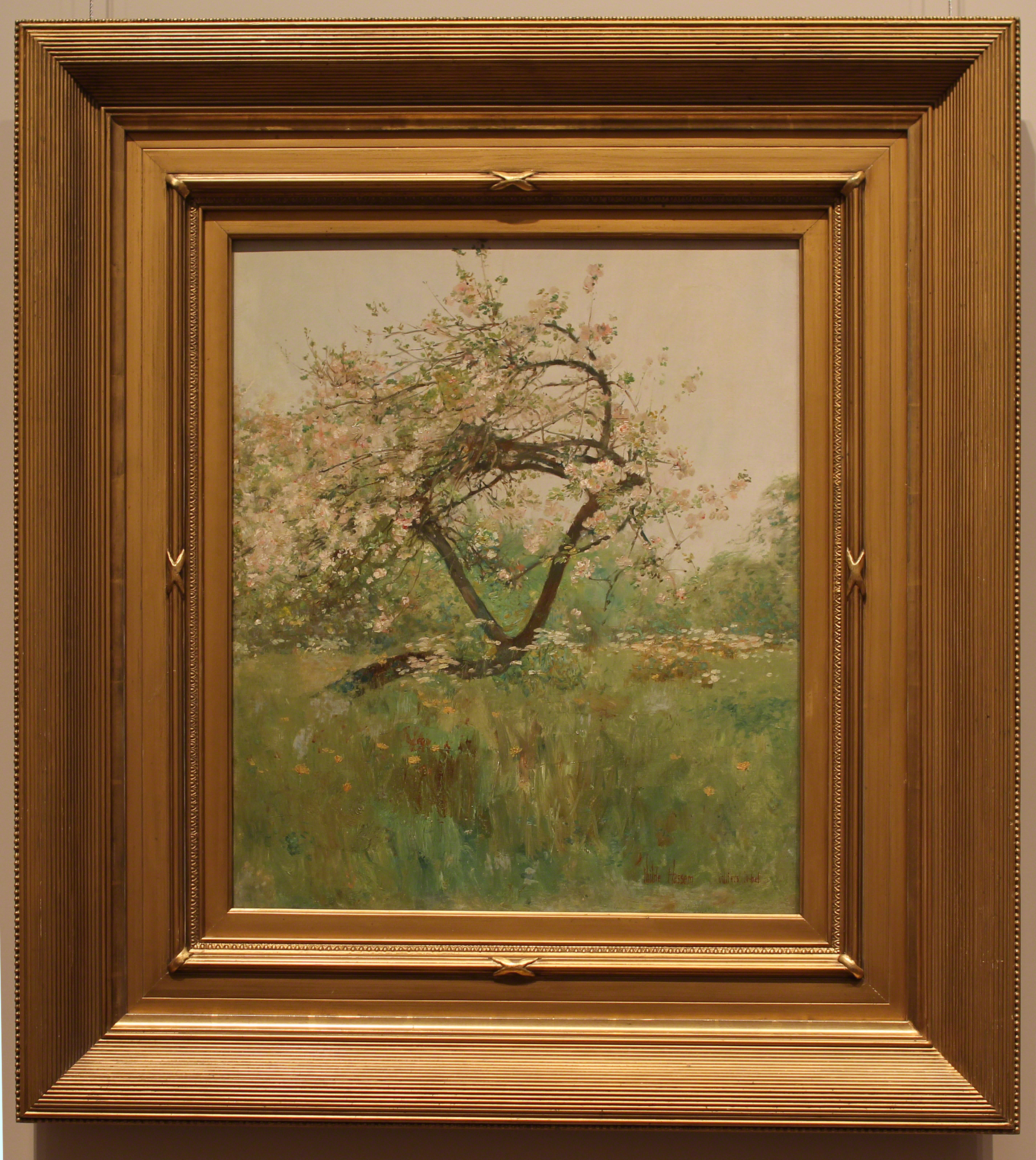
CHILDE HASSAM (1859 – 1935)
Peach Blossoms — Villiers-le-Bel, 1887–89, oil on canvas, 21-1/2" x 18-1/8". c. 1890s American frame, gold leaf and Roman-gilding, applied ornament, on wood; very fine Whistler-inspired reeded design, molding width 7 inches. "Hassam studied in Paris from 1887 to 1889. During the summers, he and his wife visited friends at Villiers-le-Bel, about ten miles north-east of the city, in the Oise River valley. There, Hassam painted a series of deligthtul garden scenes that reflect his life liong interest in the subject. Although he produced few simple landscapes in the French countryside, this canvas is an exquisite exception. The unruly, overgrown peach tree in an orchard is delectably dynamic, especially in contrast to the controlled vision of nature in the manicured garden that usually preoccupied Hassam at Villiers-le-Bel." — Metropolitan Museum, permanent collection label. Gift of Mrs. J. Augustus Barnard, 1979, 1979.490.9
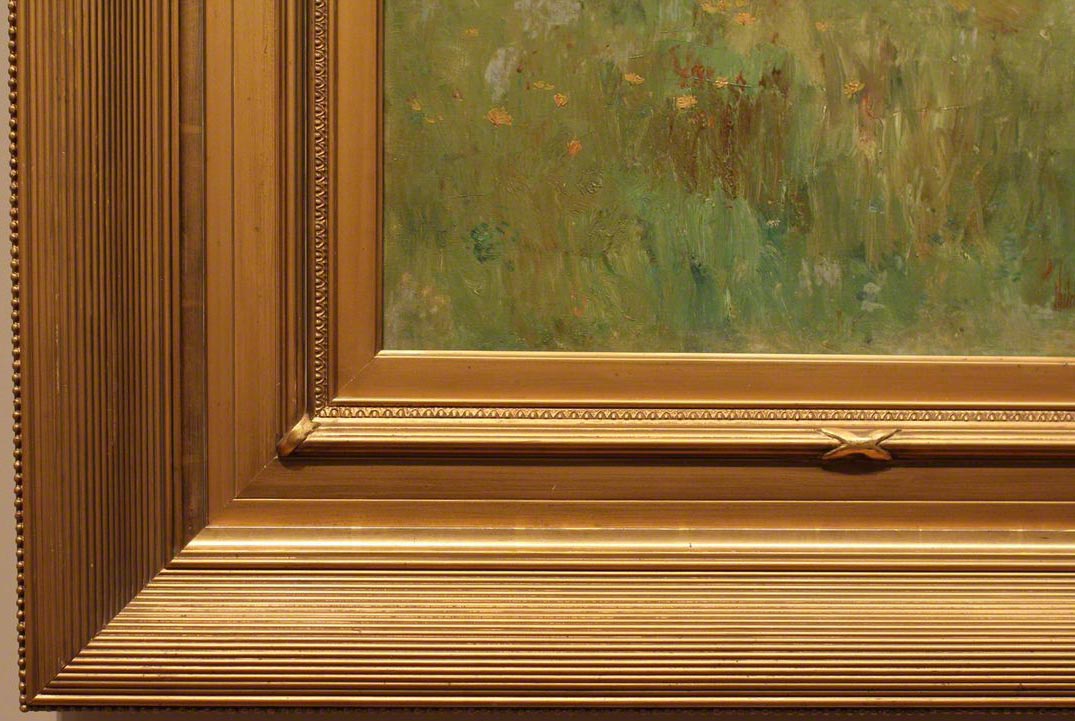
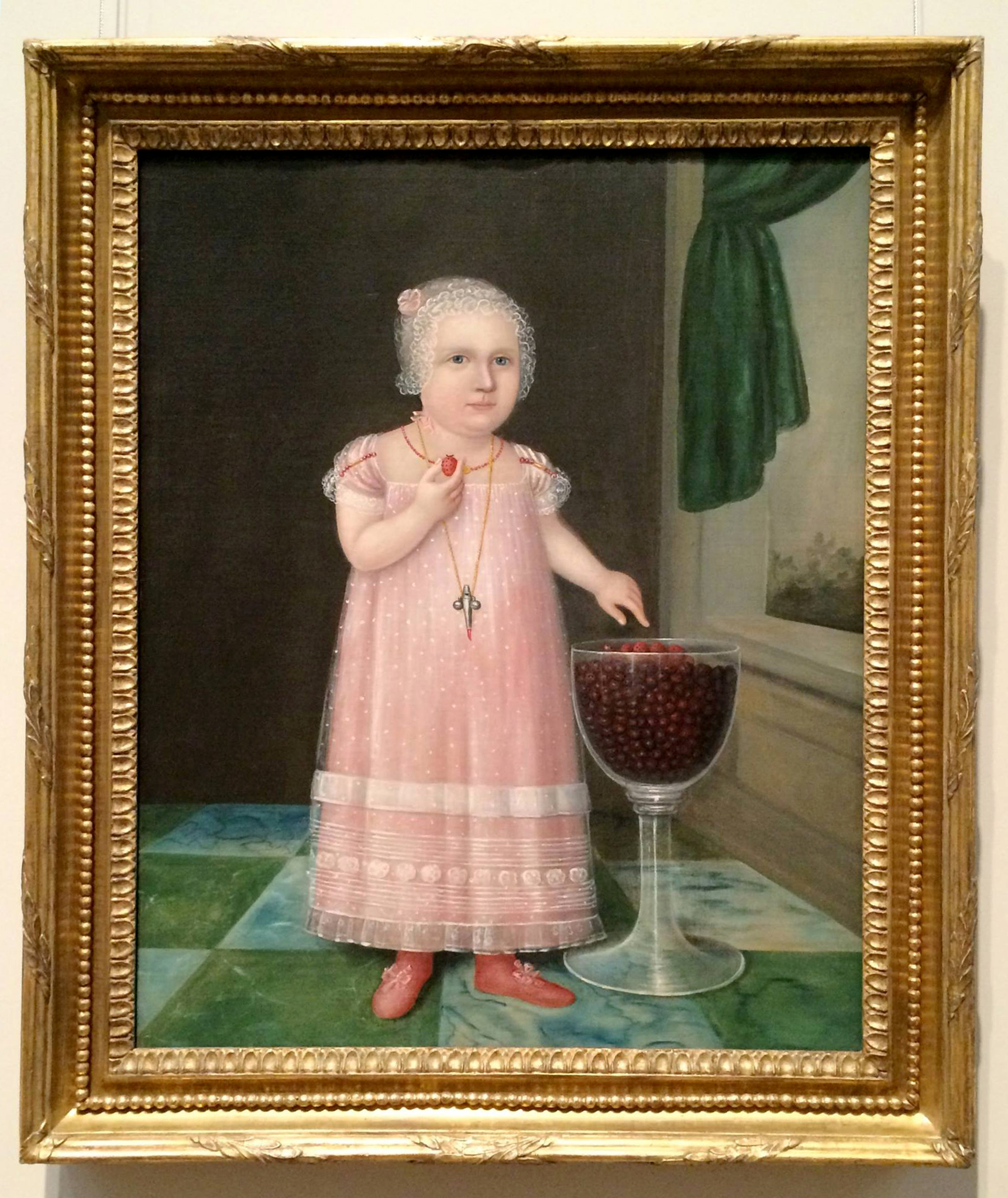
JOSHUA JOHNSON (active 1796–1824)
Emma Van Name, ca. 1805, oil on canvas, 29" x 23". c. 1790s American painting frame; gilded wood with carved and applied ornament. Molding width: 3-1/8” "This compelling portrait of a Maryland toddler is widely regarded as an icon of American folk painting. Included in numerous international exhibitions since its discovery in the late 1950s by New York’s primary folk and modernist dealer, Edith Halpert, it is now accepted as an important work by Joshua Johnson, the earliest known professional African American painter. Son of a white man and an unidentified enslaved mother, Johnson apprenticed to a blacksmith before achieving his freedom in 1782, becoming part of Baltimore’s large free black population. Emma Van Name is arguably his most ambitious and engaging portrait of an individual child. Distinguished by a bravura demonstration of the presumably self-taught artist’s talent and imaginative flair in its nuanced palette, compositional complexity, deft handling of details, and surreally scaled goblet that incongruously comes to the subject’s waist, the work suggests the particular appeal of historical folk painting to early 20th-century modernists." —Metropolitan Museum permanent collection label.
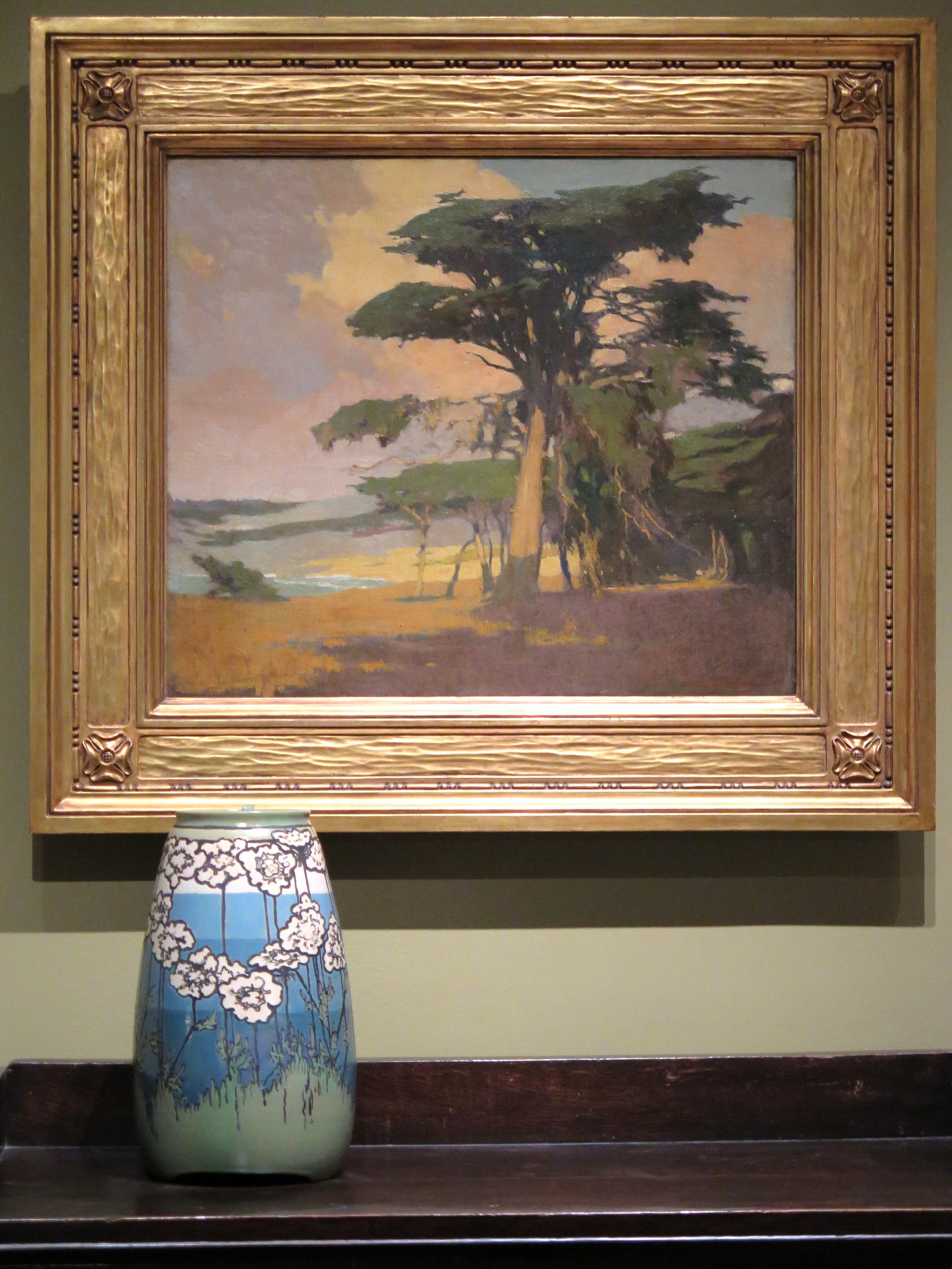
ARTHUR FRANK MATHEWS (1860–1945)
“Afternoon Among the Cypress,” ca. 1905, oil on canvas, 26-3/16 x 30-3/16 in. Custom-made hand-carved and gilded replica frame, copy of c. 1905 design, per photograph in Arthur Mathews Furniture Shop period scrapbook archived at Oakland Museum of California, that shows MMA painting in original frame (now lost). Painting: Gift of Mrs. Henrietta Zeile, 1909. “Mathews was not only a painter but an architect and a designer of interiors, furniture, and decorative objects. Through his publications and teaching, he did much to popularize his variation of Art Nouveau, sometimes referred to as the California decorative style. Mathews's landscapes celebrate California's distinctive topography, plant life, and tawny, golden tonalities. In "Afternoon among the Cypresses," he silhouettes the bent limbs and wide flat crowns of the Monterey-peninsula cypress trees to achieve a strong decorative effect. Heavy foreground shadows and the darkened copse contribute to the moody, slightly mysterious impression.” —Met Museum label.
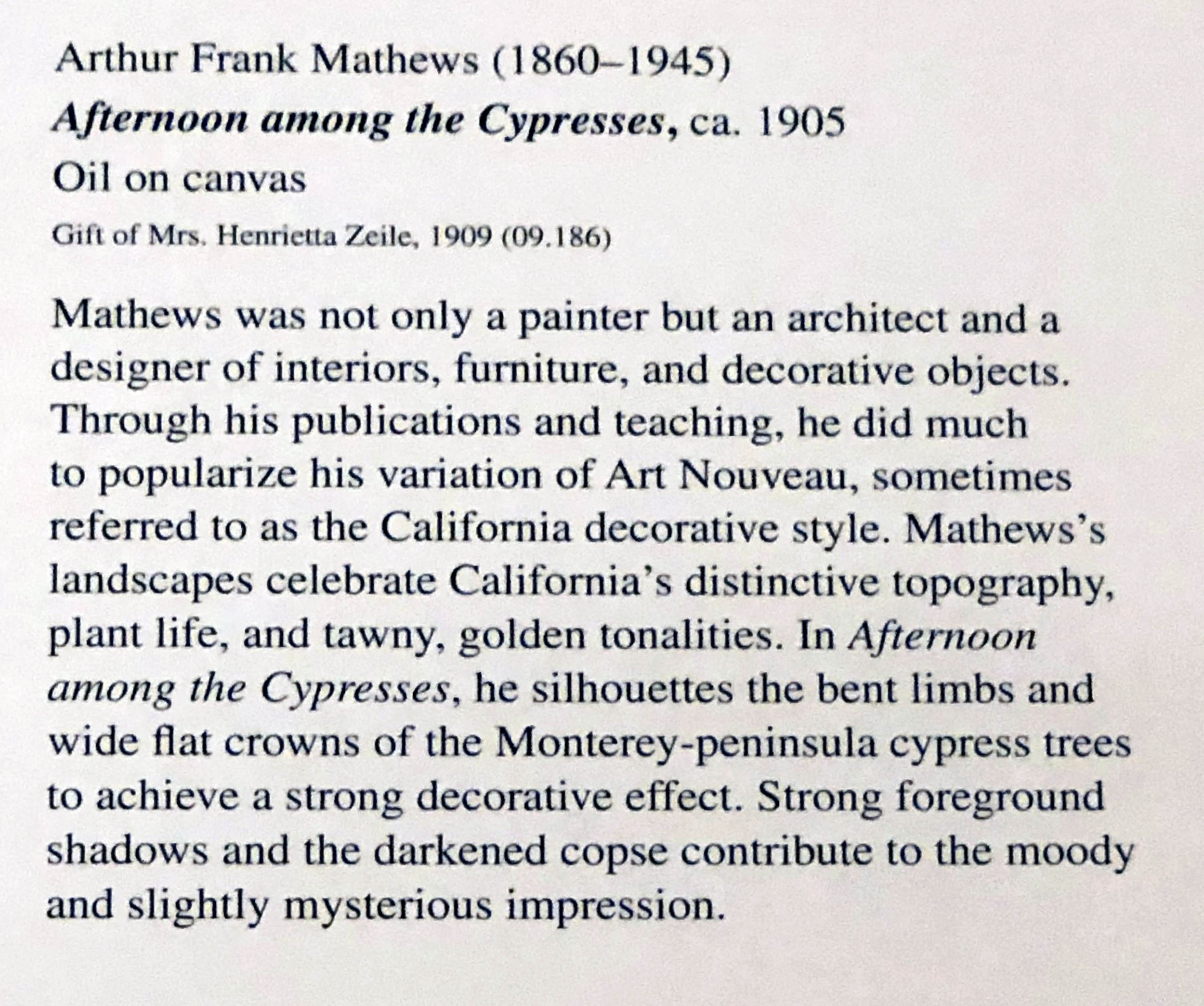

CHARLES ETHAN PORTER (1847–1923)
(Cracked Watermelon), c. 1890, oil on canvas, 19-1/8” x 28-3/16”; c. 1890s American painting frame, gilded hand-carved wood, molding width 4-7/8” MMA Purchase, Nancy Dunn Revocable Trust Gift, 2015 “The largely Connecticut-based, New York- and Paris-trained Porter was among the first African American artists to exhibit his work nationally. "Untitled (Cracked Watermelon)" is one of his largest and most impressive still lifes. Its subject—originally an African gourd brought to the New World by seventeenth-century Spaniards and cultivated by colonists—is also significant. Porter chose to paint what had been an earlier symbol of American abundance—and during the Civil War period one particularly associated with free blacks—when it was increasingly defined by virulent stereotyping. By reclaiming the "American" subject in artistic terms (and with a French stylistic flavor), Porter challenged a contemporary racist trope. A tour de force of the artist’s mature style—perfected in Paris under the influence of the work of Henri Fantin-Latour and Edouard Manet—"Untitled (Cracked Watermelon)" reveals Porter’s bravura handling of paint as well as his skills as a colorist in the composition’s dramatic light-dark contrasts of complementary colors. After decades of success painting still lifes of fruit and flowers—with the support of patrons such as Samuel Clemens and Frederic Edwin Church—Porter died in poverty and obscurity. A resurgence of interest in his work dates to the late 1980s.”
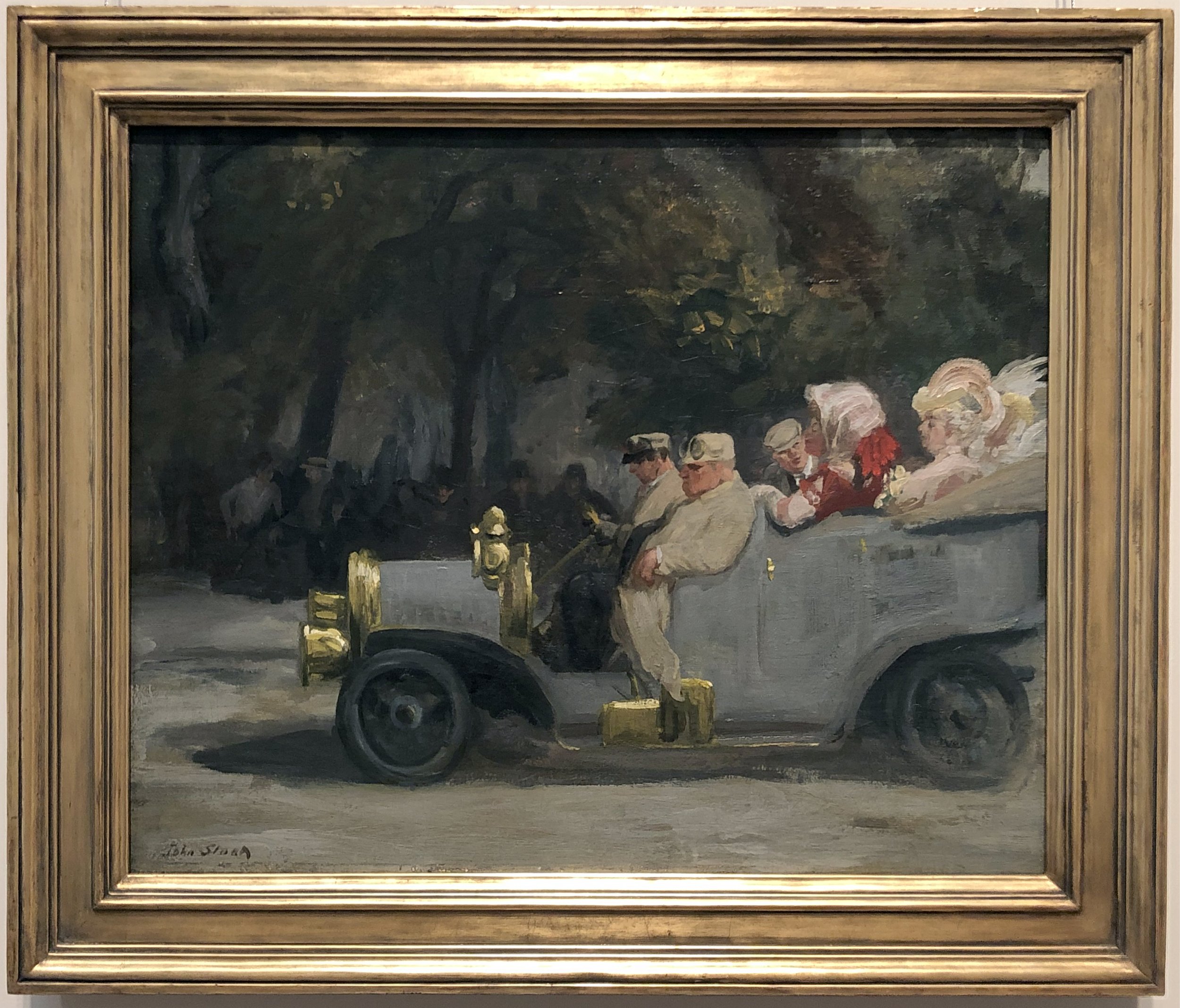
JOHN SLOAN (1871–1951)
Gray and Brass, 1907, oil on canvas, 22 x 27 in. Period early 20th-century American Arts & Crafts “Ashcan” “Bellows-style” frame; gilded hand-carved wood, Newcomb-Macklin, New York/ Chicago makers, molding width: 3-1/4 in. “Gray and Brass dates from the most dynamic year of the former newspaper artist’s career as an urban realist painter. John Sloan was the last of his Philadelphia friends, later dubbed "Ashcan" artists—Robert Henri, William Glackens, George Luks, and Everett Shinn—to relocate to New York, in 1904. Initially supporting himself as a freelance illustrator, Sloan—a self-described "spectator of life"—enthusiastically embraced his new environment, producing both paintings and prints of the city’s many attractions and mix of urbanites. In Gray and Brass, he contrasts the self-satisfied attitudes of nouveau-riche passengers in the flashy "gray and brass" motorcar with a loosely painted grouping of New York’s lower classes at rest. The scene is set on the Fifth Avenue edge of Madison Square Park, where diverse New Yorkers co-mingled—an ideal subject for the socially progressive artist. Gray and Brass belongs to the group of vital urban scenes painted by Sloan in 1907—the only one to juxtapose socio-economic difference in a single image. Here, as in all of his work, Sloan captures the vibrant culture of looking and being seen that characterized the contemporary urban spectacle.” —Met Museum label Credit: Marguerite and Frank A. Cosgrove Jr. Fund, 2018 © 2022 Artists Rights Society (ARS), New York

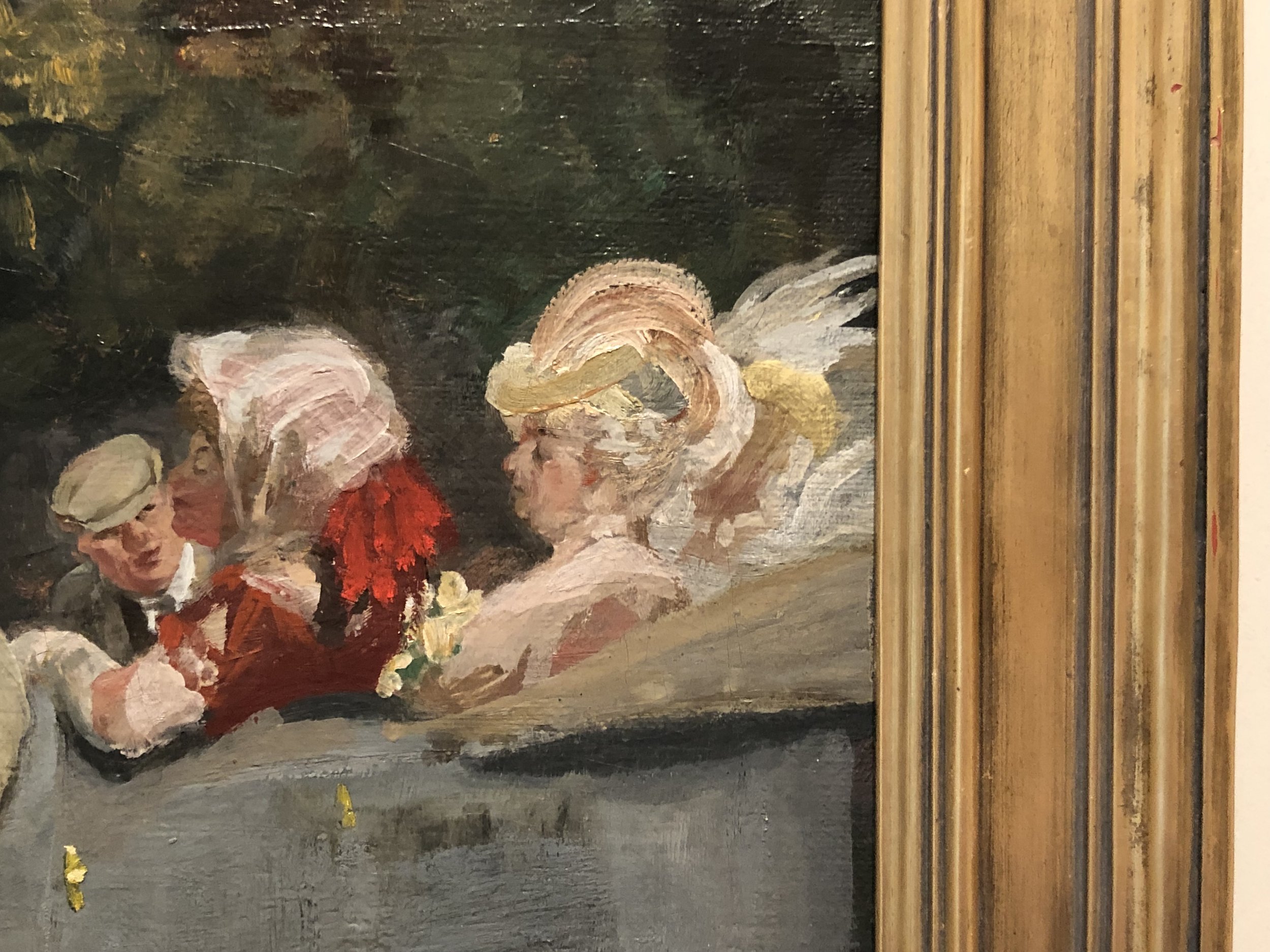

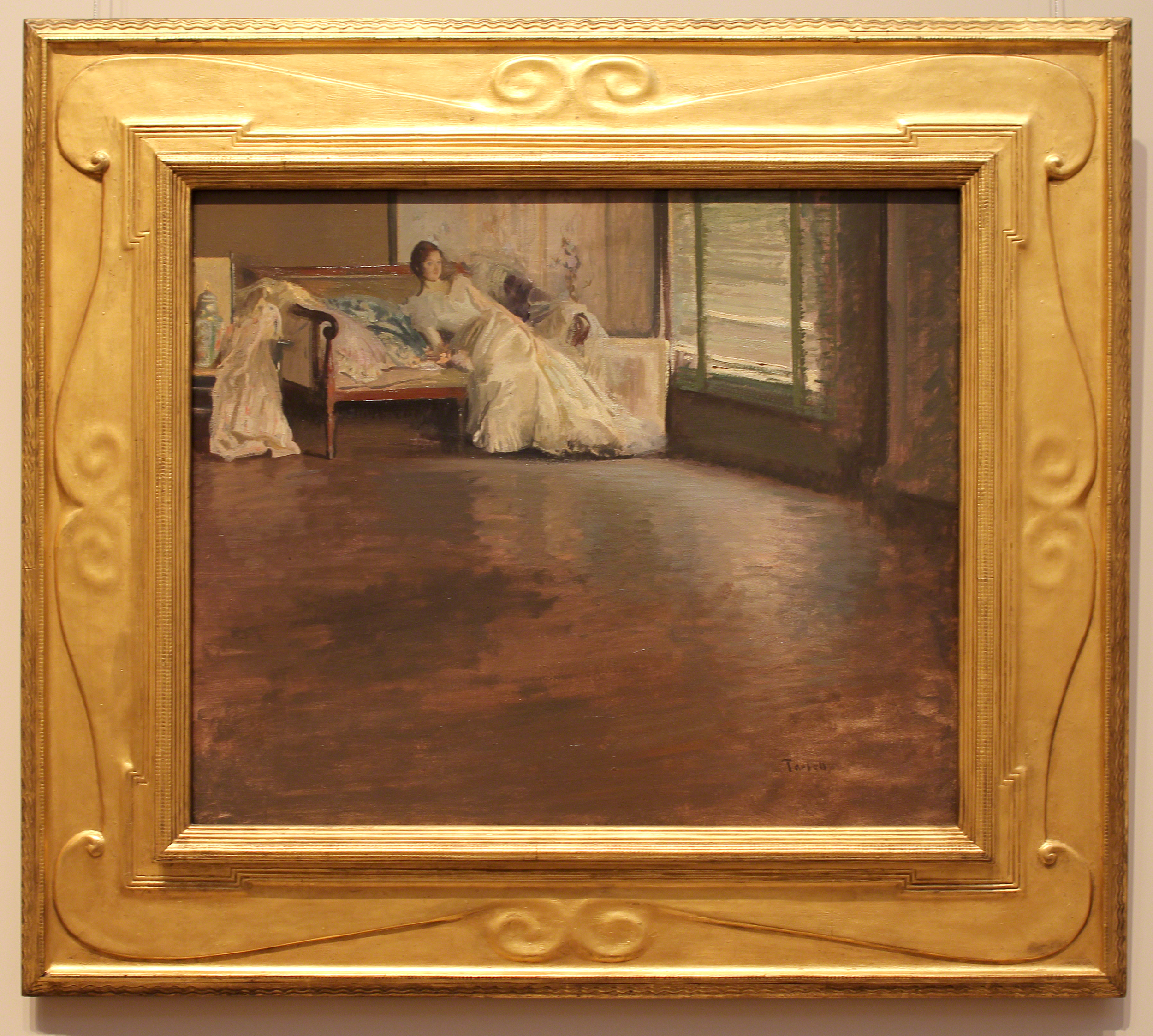
EDMUND CHARLES TARBELL (1862 – 1938)
Across The Room, ca. 1899, oil on canvas, 25" x 30-1/8", custom-made replica of c. 1895-1905 American Stanford White painting frame, gilded cast ornament on wood, molding width 7-1/4 inches, fabricated by Gill & Lagodich, replica of an original Stanford White frame in the Gill & Lagodich Collection. "The Boston Impressionist Tarbell's canvas recalls Johannes Vermeer's portrayals of quiet rooms occupied by solitary women. Its asymmetrical composition was inspired by Edgar Degas, James McNeill Whistler, and Japanese woodblock prints. The Chinese porcelain jar and Japanese screen demonstrate Tarbell's esteem for Asian art and suggest Boston's connection to the China trade. Thus, in many ways, the painting echoes the widespread belief — articulated by the novelist Henry James in 1867 — that Americans could 'deal freely with forms of civilization not our own, can pick and choose and assimilate an in short ... claim our property wherever we find it.'" —Metropolitan Museum, permanent collection label. Bequest of Miss Adelaide Milton de Groot (1876–1967), 1967, 67.187.141
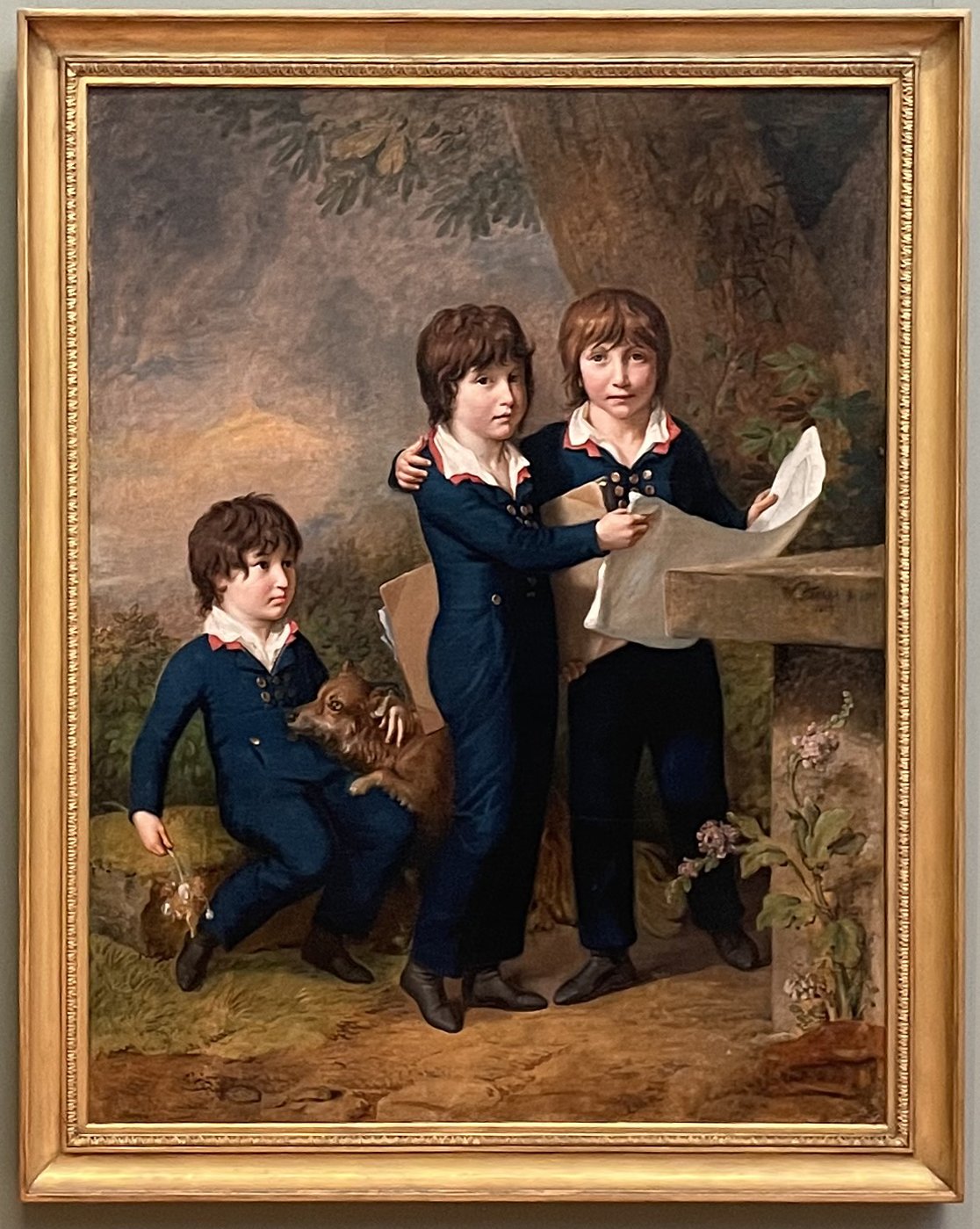
JOHANN HEINRICH WILHELM TISCHBEIN (1751–1829)
The Children of Martin Anton Heckscher: Johann Gustav Wilhelm Moritz (1797–1865), Carl Martin Adolph (1796–1850), and Leopold (born 1792), 1805, oil on canvas, 58 x 45 in. Custom-made replica mid-19th-century European painting frame, gilded applied ornament on wood. “Sons of the Hamburg banker Martin Anton Hecksher examine a plan of the Schnepfenthal school, founded in Gotha in 1787 and considered one of the most progressive in Germany. Tischbein was at the heart of German Romanticism’s rich intellectual culture, and he depicts the young students in a natural setting that was sympathetic to Enlightenment educational reforms that swept Europe and encouraged a new vision of childhood.” —museum label. Painting Gift of the family of August Heckscher II, in his memory, 2002
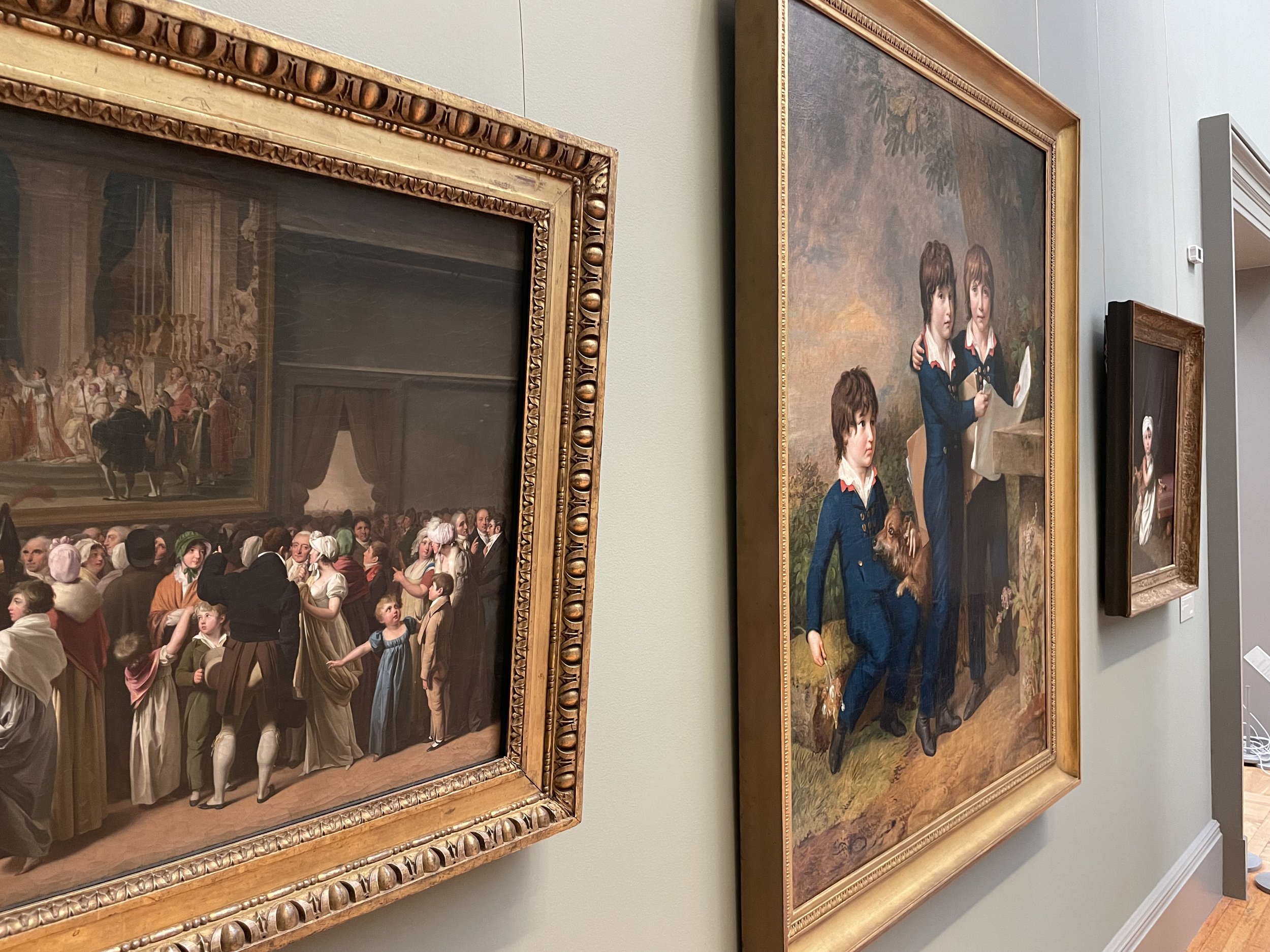
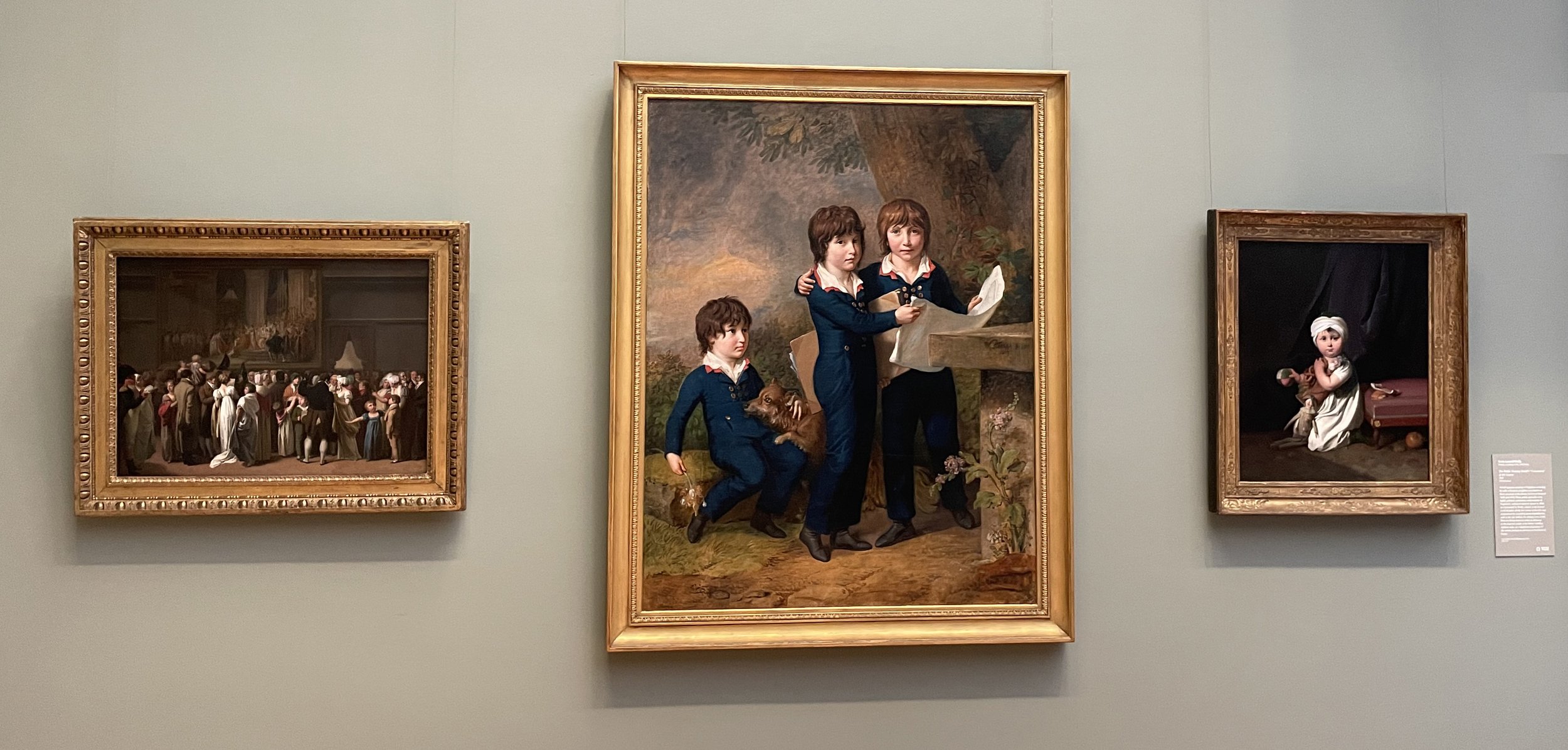
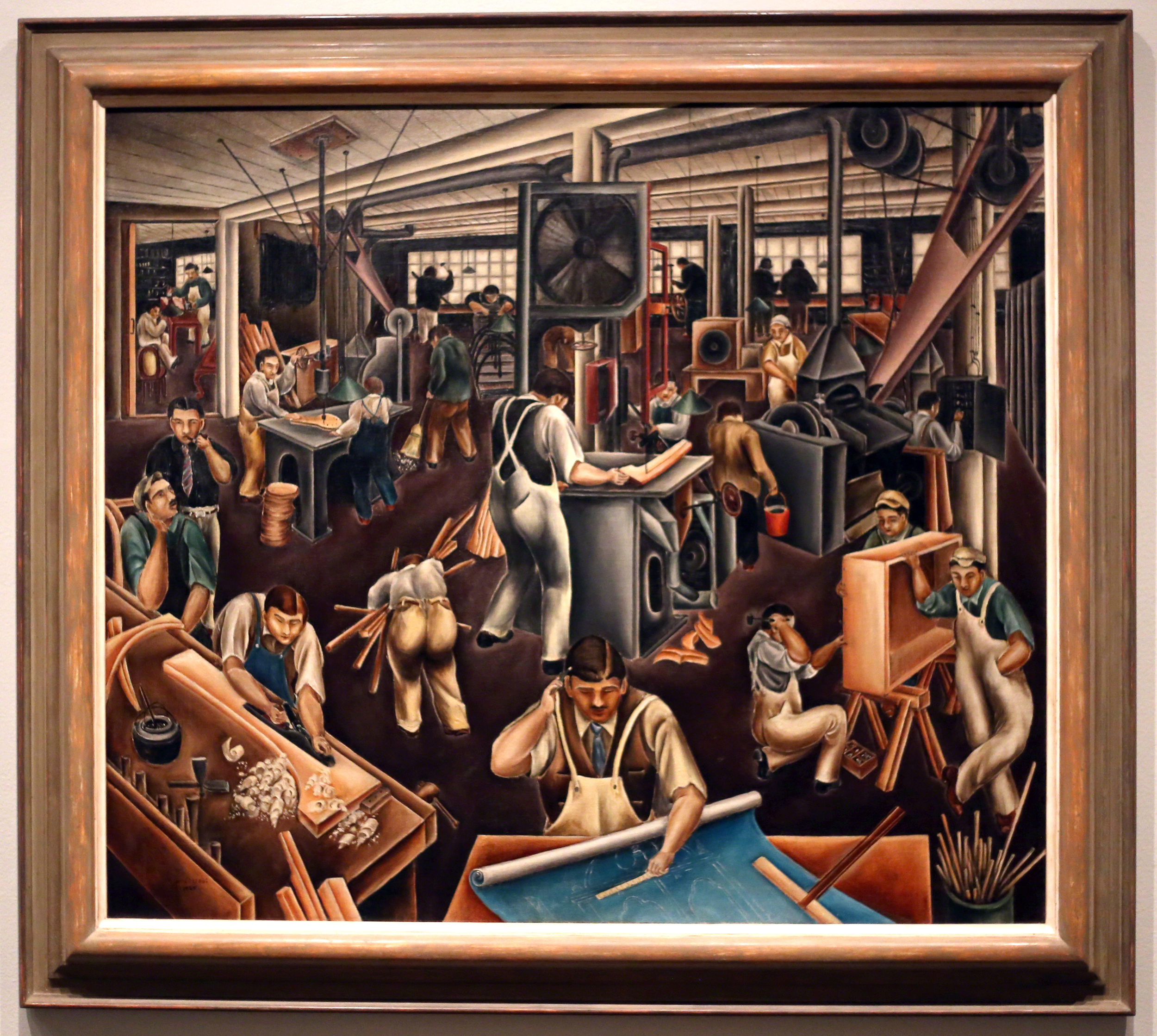
BUMPEI USUI (American (born Japan), Nagano 1898–1994 New York)
The Furniture Factory, 1925, oil on canvas , 36” x 43”. Custom-made replica c. 1930s-40s American Modernist painting frame, reverse bolection profile, gilders clay and polychrome on wood, toned gesso hollow at sight edge. Molding width: 4-1/8” "The playful experimentation with perspective and proportions in this depiction of men and boys absorbed in various tasks related to furniture manufacture fills the canvas with frenetic energy. Details, such as the wide range of tools and machinery that animate the interior, reveal Usui’s own extensive knowledge of woodworking. Following his immigration to New York from Japan, Usui integrated into the city’s art community through his trade as a frame maker, through which he met many leading contemporary painters." —Metropolitan Museum of Art, Permanent Collection Label. Painting: MMA Purchase, Arthur Hoppock Hearn Fund, by exchange, 2014.

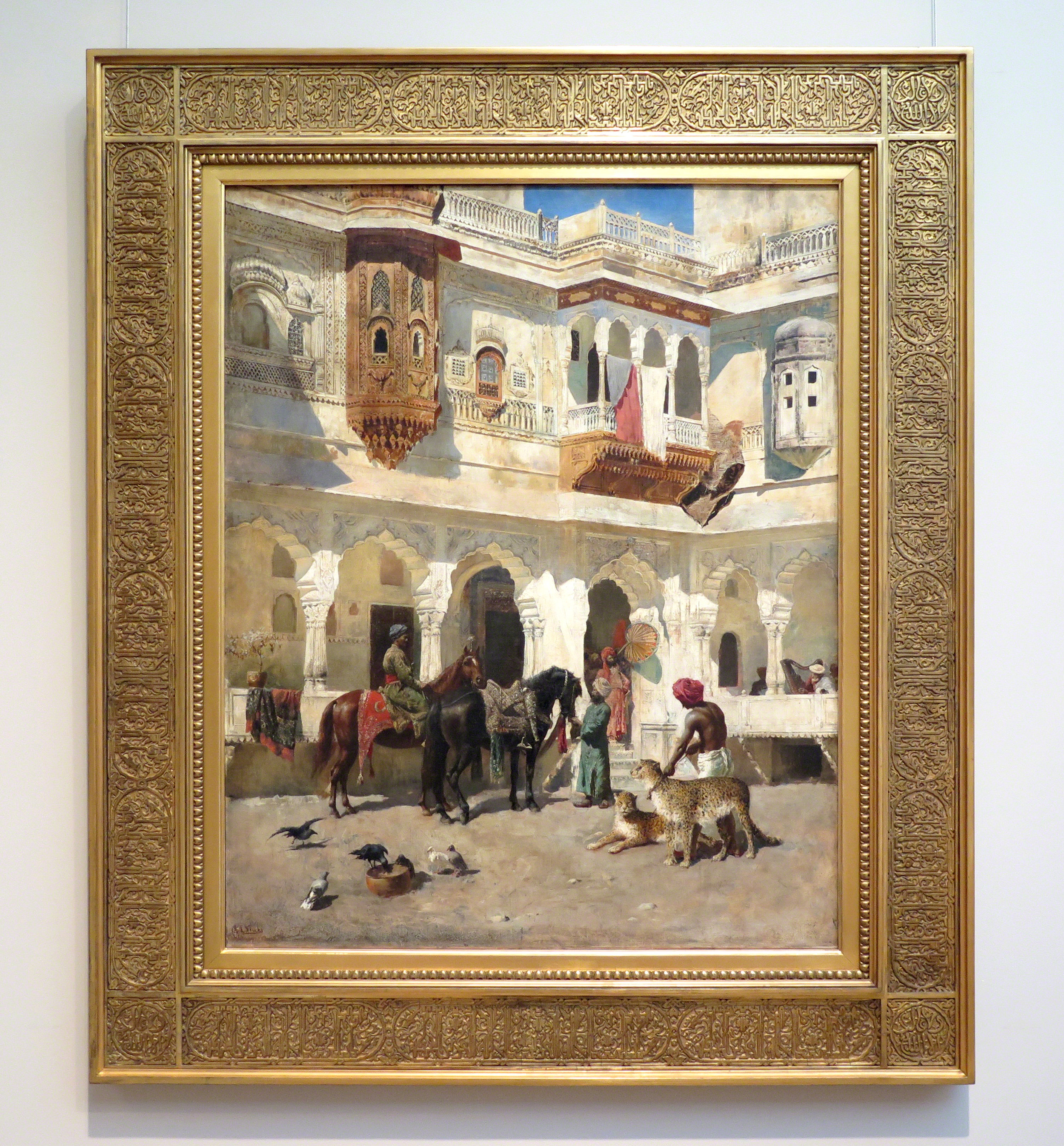
EDWIN LORD WEEKS (1849–1903)
The Rajah Starting on a Hunt, ca. 1885, oil on canvas, 39-9/16 x 32 inches. Period frame, rare late-19th-century Orientalist frame, gilded applied composition ornament on wood, molding width 6-1/4 inches. “Boston-born and Paris-trained, Edwin Lord Weeks was a leading expatriate painter, illustrator, photographer, writer, explorer, and collector as well as the first known American artist to visit India. This painting depicts preparations for a hunting expedition at a palace in Ajmer, Rajasthan. Likely dating from the artist’s 1892-93 trip to the country, he described the palace façade in his published accounts as ‘completely coered by tiers of projecting windows … wonderfully light and airy in effect.’ The striking period frame is not original to the painting, but suggests the ‘Orientalist’-style setting that Weeks favored for his work.” —museum permanent collection label.
